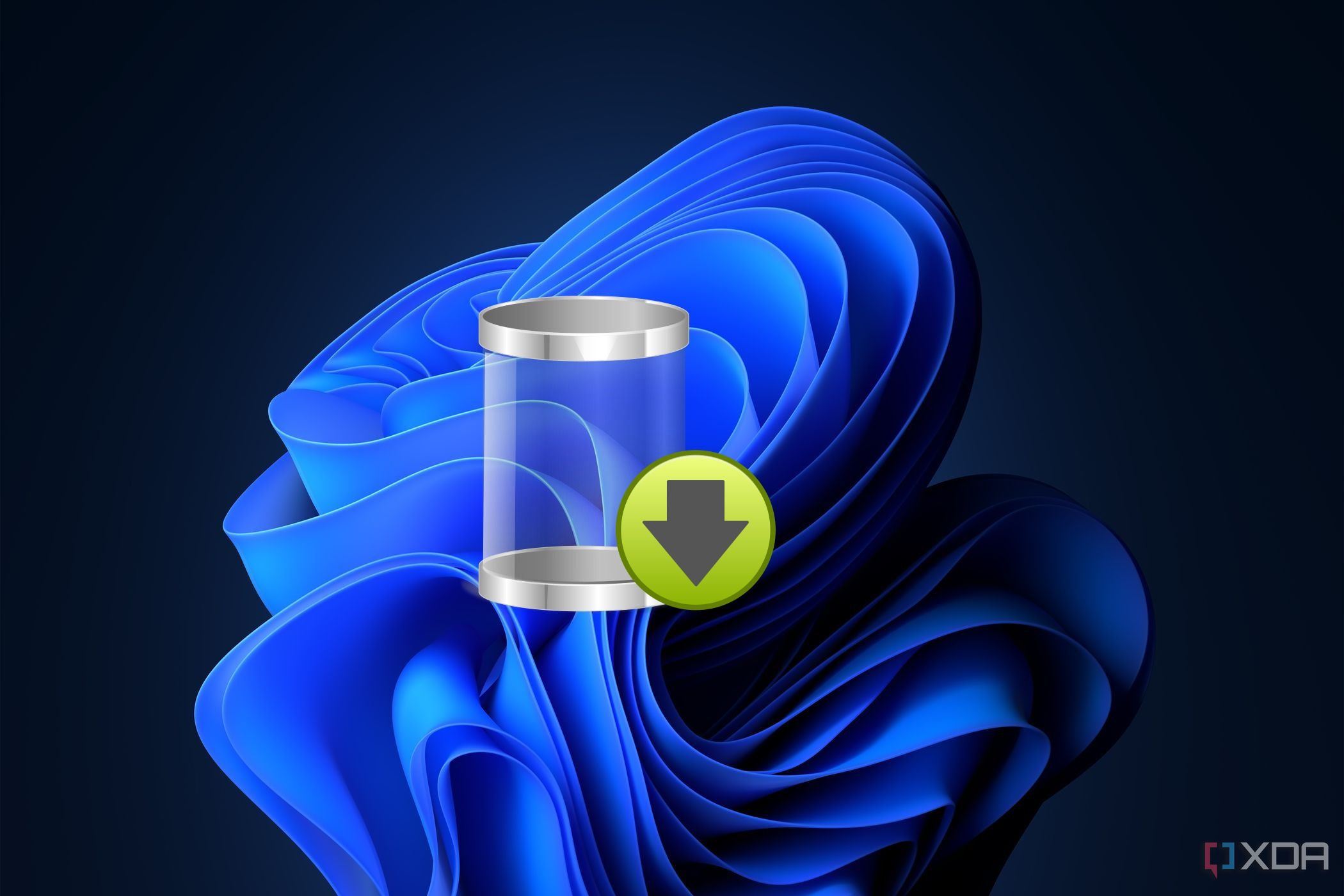Unlike older versions of Windows, Microsoft makes it rather easy to download Windows 11 installation media, if you know where to look. However, both the Media Creation Tool and the ISO files offered by Microsoft to regular users usually contain outdated builds, which means you have to download the latest monthly updates during/after the installation phase. In case you need to service more than one PC, this design only exacerbates the problem.
Ronald.phillips
Shared posts
How to use UUP dump to create an updated Windows ISO for any channel
Protect Your Company: Ransomware Prevention Made Easy
Unraveling Rorschach
Check Point Research (CPR) and Check Point Incident Response Team (CPIRT) encountered a previously unnamed ransomware strain...
From Westworld To Annihilation, No Sci-Fi Movie Is More Influential Than Andrei Tarkovsky's Stalker
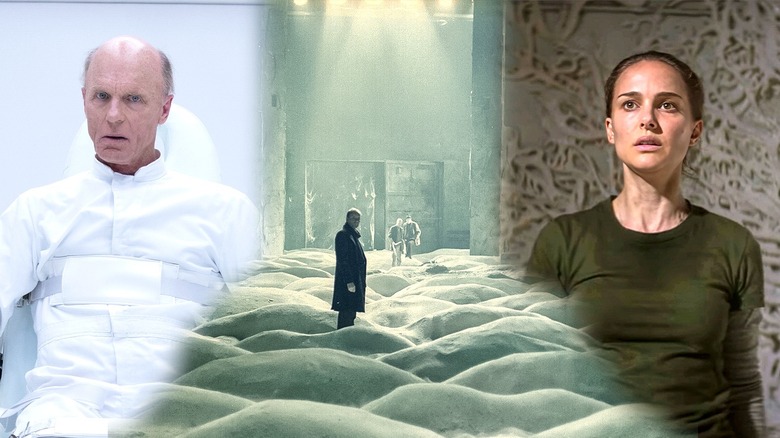
The premise of Soviet filmmaker Andrei Tarkovsky's magnum opus, "Stalker," seems deceptively simple. The titular stalker (Alexander Kaidanovsky) must guide two men, The Writer (Anatoly Solonitsyn) and The Professor (Nikolai Grinko), to and from The Zone, a mystical no man's land whose ruins remain shrouded in secrecy. Men who venture into The Zone have never returned, with the exception of the Stalker, who has made this dangerous foray into the unknown his sole source of income. The aim is to guide passengers to The Room, a space within the Zone that can make anyone's wishes come true. But do we know what we truly desire? What if our deepest urges betray our perception of who we think we are? This is one of many, many questions "Stalker" seems to pose.
What Tarkovsky manages to do with "Stalker" is astounding — he invests a rather straightforward premise with layers of thematic richness that feel like a labyrinth of co-existing philosophies, interpretations, and meaning-making. Rarely has a sci-fi film been so hyperaware of the rot at the core of its baffling premise, and succeeded in offering a terrifying, yet hopeful dystopian tale about the futility of human desires. The hold that "Stalker" has on contemporary sci-fi is obvious, yet seldom acknowledged, as everyone from Lars von Trier to Alex Garland has paid homage to "Stalker" in some shape or form.
"Stalker" can be interpreted as a political or religious allegory, a conflict between one's artistic and pragmatic selves, an existential manifesto, or all of the above. The more layers the film sheds, the deeper the lore is revealed to be. Let's talk about the complicated, unprecedented legacy of "Stalker," a film that pushed Tarkovsky to his limits in a way that mirrors the haunting bleakness that seeps through every frame in the film.
A Risk-Laden, Treacherous Journey
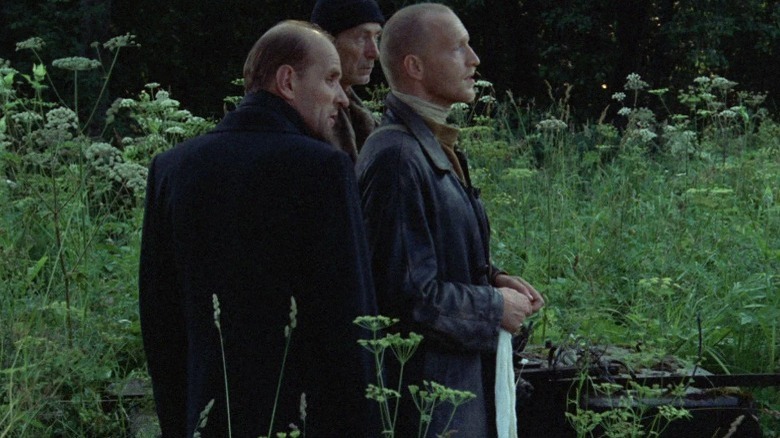
To be a stalker in Tarkovsky's world is the ultimate act of self-effacement. Stalkers constantly skirt the edges of legality and deliberately make their way into a space that is off-limits to anyone, and to do so, one has to completely empty themselves of their personal goals, dreams, and desires. The men he must guide, in this case, The Writer and The Professor, hardly understand the space that they desperately think will fulfill their wishes, as they approach this pilgrimage according to their respective, often restrictive, worldviews.
By the end, when the three reach the heart of the Zone, they expose their own hearts, revealing their innermost desires, irrespective of how utterly shameful or disturbing they might be. No matter how many masks one slips on, the Zone finds a way to lay one's soul bare, forcing men who dare to venture into this space to be perceived.
In a heartbreaking instance of life imitating art, Tarkovsky's own journey towards the completion of "Stalker" was as dangerous and risk-laden as the pilgrimage in the film. After he began working on "Stalker" in 1976, various issues plagued the project — ruined negatives of exterior shots set production back, the film's cinematographer had to be abruptly replaced due to personal conflicts, and Tarkovsky suffered a cardiac arrest two years later, which further delayed the film's release. Moreover, the film's principal photography, which was supposed to be done in Tajikistan, was later moved to Estonia on account of an earthquake, and the film's crew had to relocate near a hydroelectric power plant that spewed toxic waste, making several crew members sick.
These intense behind-the-scenes struggles are reflected in the philosophies that "Stalker" holds up, but instead of hampering the quality of the film, they only serve to intensify its beauty and terror.
The Quietest Place In The World

No monstrous entities lurk through the lush green meadows of the Zone, and nor do its sand dunes hide any mythical beasts. The threat in "Stalker" comes from within, as it directly transports its characters (and its viewers) into a world that not only defies the laws of physics but is also beyond human comprehension. As the three men journey deeper into the ruins, they bicker more than ever, eager to reshape the world as they deem fit. While The Professor takes on a hyper-skeptical, pragmatic view of The Room, The Writer remains embroiled in his love for art and navigates the space with sensitivity. As for the Stalker, he feels at home for the first time, laying down on a bed of warm grass and hugging himself in an almost spiritual relief.
As the Stalker reiterates at several points, the Zone demands respect, with silence being one of its many traps that strip its inhabitants of falsehoods. The wishing room that serves as the catalyst for the film's events is a reminder of the futility of desires, as it is impossible to pin down what or who we truly need and want to be. Once we achieve something beyond our reach, our expectations do not end there — they shift, mutate, and deepen the void of dissatisfaction that plagues even the best of us.
Moreover, the Zone is pointedly haunting for a reason: The landscape is a mixture of almost-alien beauty and the charm of mundane human objects, such as books and trinkets submerged underwater while being surrounded by toxic waste. Tarkovsky might or might not be making allusions to chemical warfare or environmental degradation, but it is impossible to gloss over the powerful prescience that "Stalker" embodies, shaping numerous sci-fi offerings to come.
The Influence And Legacy Of Stalker Remains Unparalleled

It is fairly common knowledge that Ingmar Bergman regarded Tarkovsky as one of the greatest filmmakers of his generation, and the two directors shared philosophical sensibilities, as evidenced by the sonic overlaps between "Winter Light" and "The Sacrifice." The influence of "Stalker," however, is not limited to Tarkovsky's immediate peers — pioneers of the New Russian Cinema movement, such as Aleksandr Sokurov, borrowed heavily from the Soviet filmmaker and were heavily influenced by his outlook on the human condition.
Tarkovsky approaches core human impulses with great nuance while emphasizing the importance of memory and nostalgia, which directly influence the kind of people we want to be. Some cycles are perennial and ouroboros-like, such as the Stalker's constant suffering and mental imprisonment, which he can only shed off in a plane of existence removed from his own.
The Zone, once a one-of-a-kind, Tarkovskian landscape, has been replicated in numerous films and pieces of media, from Chris Marker's "Sans Soleil" to Jonathan Nolan and Lisa Joy's TV show "Westworld." Perhaps no work takes more obvious influence from "Stalker" than Alex Garland's "Annihilation," which takes place in a similar treacherous setting dubbed the Shimmer -- a highly-saturated and dreamlike space much like Tarkovsky's Zone, birthing mutations and rogue versions of oneself within a mystical vacuum. As in "Stalker," the revelations in Garland's film are deeply personal and universal all at once, where the truth resides not in revealing dialogue but in wordless details that paint a vivid picture of a reality that directly challenges our own.
The film's visual language warrants a deep dive in its own right, as its beauty is not merely skin deep. It furthers the filmmaker's vision, informing the themes embedded into the narrative and conveying emotional vignettes that tint the synesthetic experience that is "Stalker."
An Open Heart Leads To Essential Truths
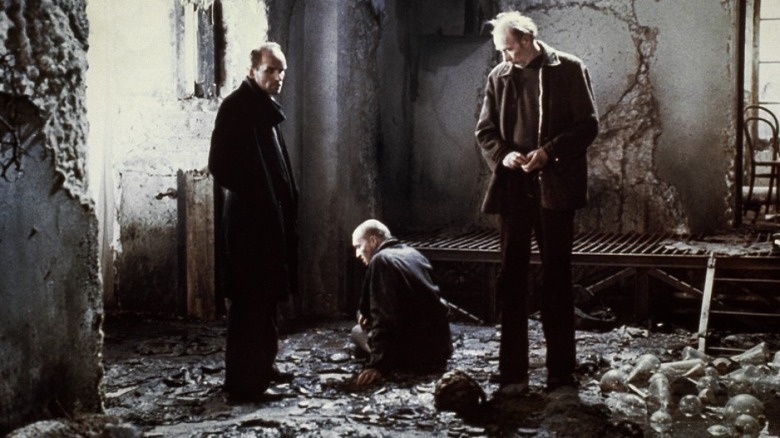
The wealth of interpretations that "Stalker" accommodates eventually mesh into one another, forming an interconnected web of theories/philosophies that form a cohesive whole. While "Stalker" is bound to resonate differently with different folks, the heart of the film seems to posit a war between hardened rationality and emotional openness. The Professor, who wishes to destroy the Zone lest it falls into the wrong hands, represents the extreme (albeit realistic) worldview that humanity is capable of abominable things, including sullying a pure, untouched space like The Room. Greed and ambition know no bounds, and they can be core motivators for people to step into The Room and manifest desires that can threaten humanity itself.
On the other hand, The Writer and the Stalker are more open to hope, although they view the world in distinct ways. The Writer, who is essentially an artist, has grown disillusioned with the world and questions his worth after being endlessly criticized by those around him. What he wants from The Room seems to be creative inspiration, but even this epiphany is plagued with doubts, as he ponders whether art holds true meaning without adoration or accolades. To write, to create is to suffer, he muses, as he grapples with faith and spiritual queries that haunt the core of his being.
The Stalker, neither artistic nor pragmatic, emerges as the most spiritually profound of them all. He desperately needs people to believe in the power of the Zone, as it grants him a purpose to keep going. When both men fail, he laments, but the ending affirms that there is still hope, as a new generation will have the ability to bridge the gap between this world and the next with psychic abilities beyond imagination. May everything come true.
Read this next: Sci-Fi Box Office Bombs That Deserve A Second Chance
The post From Westworld to Annihilation, No Sci-Fi Movie is More Influential Than Andrei Tarkovsky's Stalker appeared first on /Film.
Hackers Using Self-Extracting Archives Exploit for Stealthy Backdoor Attacks
The Last of Us Part I PC woes prioritized over Steam Deck Verification
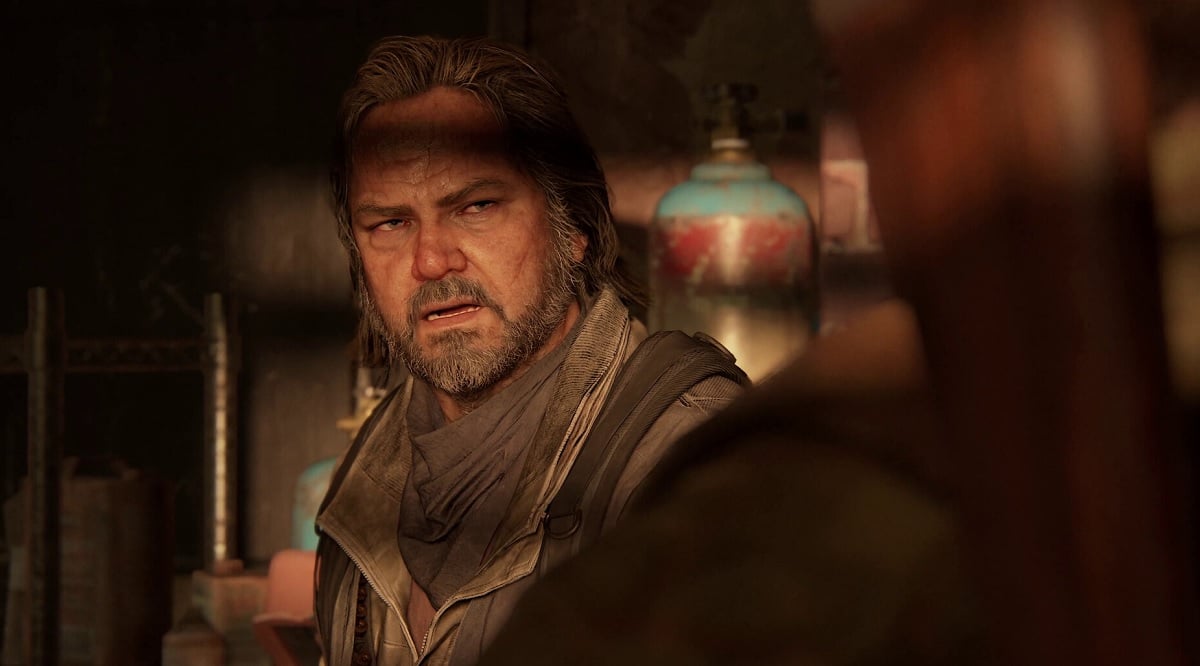
Patches en route for troubled port
Naughty Dog has released another patch for the troubled PC edition of its critically acclaimed grimfest The Last of Us Part I — In addition, the studio noted that fixing the port's issues was currently its top priority, and those waiting on its Steam Deck Compatibility will need to remain patient while the game, y'know, gets fixed.
The Last of Us Part I V1.0.1.7, which is available to download right now, tackles several crash instances that would occur when booting the game or when transitioning between Windowed and Fullscreen modes. Additionally, the new update includes fixes for the game's UI, and tackles some of the strange behavior exhibited by NPCs out on the mean streets of Boston. Players with nVidia Series 30 graphics cards are advised to update their drivers before playing with the new patch installed.
"We at Naughty Dog and our partners at Iron Galaxy are closely watching player reports to support future improvements and patches." writes ND on the official patch notes. "We are actively optimizing, working on game stability, and implementing additional fixes which will all be included in regularly released future updates."
The Last of Us Part I launched on Steam on March 28. And, despite being delayed by almost a month, has disappointed fans with a litany of issues, ranging from visual glitches and broken textures, to clipping animation, effect botches, long load times, and random crashing. The Steam releases holds a "Mostly Negative" review rating on the Steam platform, a disappointment given Naughty Dog's excellent PC port of previous release such as Uncharted: Legacy of Thieves.
The post The Last of Us Part I PC woes prioritized over Steam Deck Verification appeared first on Destructoid.
Man accidentally packs can of Guinness in his kid's lunch box. Has to pick his kid up from school and explain why the bar towel was missing [Facepalm]
To mod or not to mod: The pros and cons of UGC
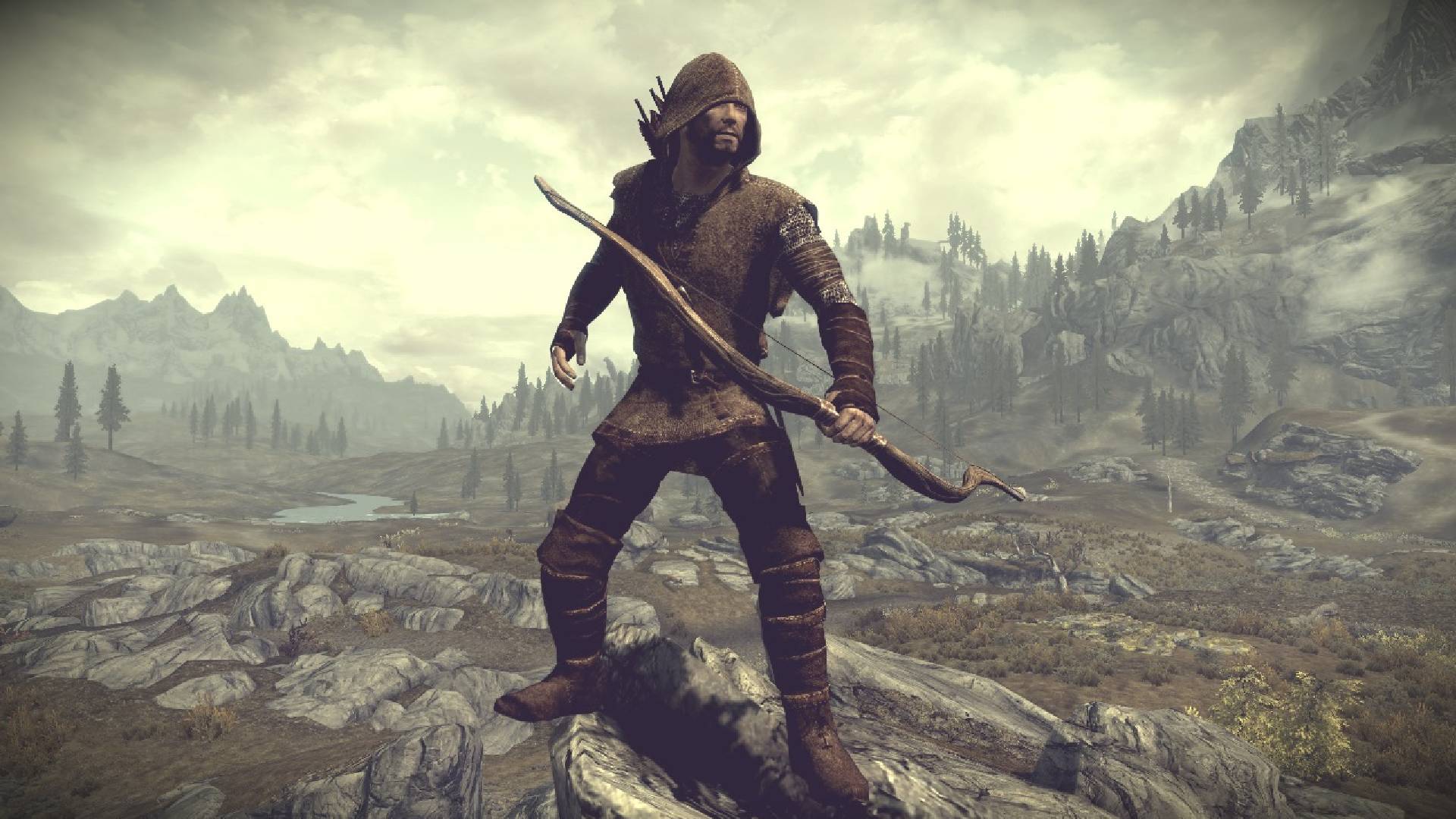
If you're a long-time PC gamer, you'll probably already have downloaded plenty of user-generated content for your games. Whether you're installing the best Minecraft mods or playing around with the best Sims 4 mods, you'll have found ways to expand your favourite games beyond what the developers could ever have imagined – or been able to include without having a lengthy call with Shrek's lawyers.
The Mandalorian's Darksaber Follows Harry Potter Rules, Apparently
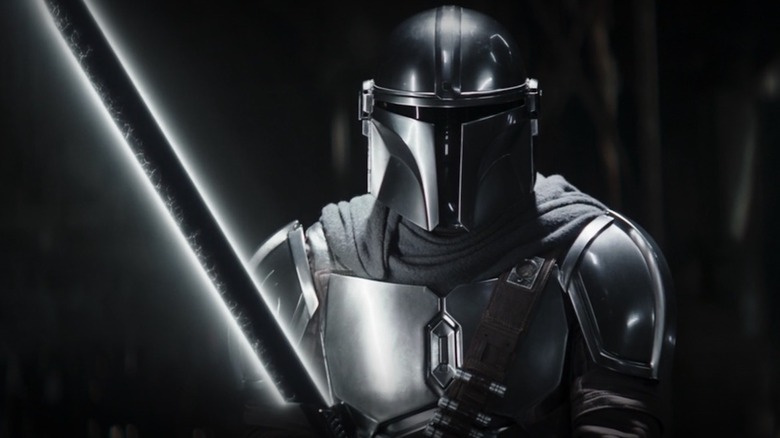
This post contains spoilers for "The Mandalorian" season 3, episode 6, "Guns for Hire."
One of the single biggest questions coming out of the second season of "The Mandalorian" was how the ownership of the Darksaber would shake out. The Darksaber itself is the blade of a Mandalorian Jedi, Tarre Vizsla, built centuries ago. Tarre Vizsla was the first Mandalorian Jedi and had a place of respect in the Mandalorian culture. When he died, the Jedi kept his blade — the unique, black-bladed Darksaber — in their temple. Later, the Mandalorians broke in and took it back.
The blade itself got passed down among the leaders of Mandalore. It was said that the leadership of Mandalore and ownership of the Darksaber had to be taken in open combat, but that tradition ended with the installation of the government of Duchess Satine Kryze. She worked to put the warrior past of Mandalore behind them.
The blade was then taken up by Pre Vizsla, the leader of Death Watch, who tried to take Mandalore back over. Unfortunately, he got in league with Lord Maul and lost his head over it. The Darksaber stayed in Maul's possession through the end of the Clone Wars and beyond, into the era of the rebellion against the Empire. Eventually, Sabine Wren was able to recover the Darksaber from him and she passed it on to Bo-Katan — without a challenge — so she could lead Mandalore.
To many who believed in the more martial ways of Mandalore, this was a mistake.
The Curse Of Mandalore
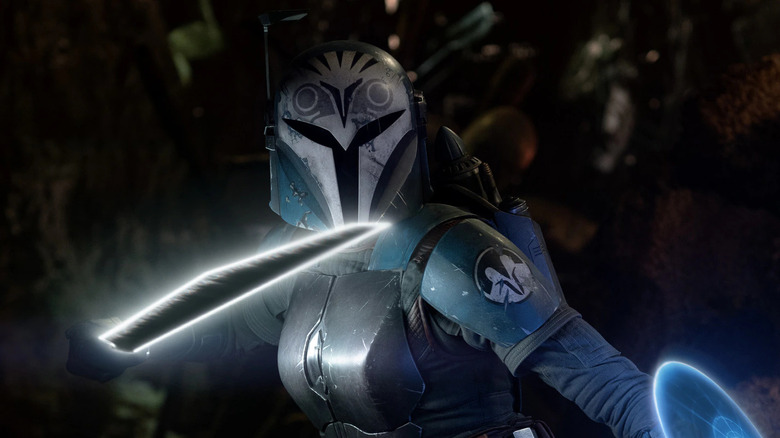
When talking to Din Djarin about the curse of Mandalore in "The Book of Boba Fett", the Armorer made it clear to Din that she thought Bo-Katan had doomed Mandalore by leading with the Darksaber without winning it in combat. That was why Bo-Katan Kryze was so gung ho about winning it back from Moff Gideon. If she could take it from him in combat, she would once more be the rightful ruler of Mandalore. The look of devastation on her face when Moff Gideon revealed that Din Djarin had taken it from him in combat was enough to lead everyone to believe that Din would be her enemy from that point forward ... but that was not meant to be, either.
In the latest episode of "The Mandalorian," titled "Guns for Hire," Axe Woves, one of Bo-Katan's former followers, said that she should be challenging Din Djarin for the Darksaber, not him for his station. She countered that there had been enough bloodshed among Mandalorians, only for Din to offer her the blade. She tried refusing, saying that it had to be won in combat, but Din reminded her that he was defeated by the creature in the Mines of Mandalore and then she defeated the creature, meaning the blade really belonged to her.
She accepted the blade, and the other Mandalorians accepted this chain of title as well.
The Elder Wand
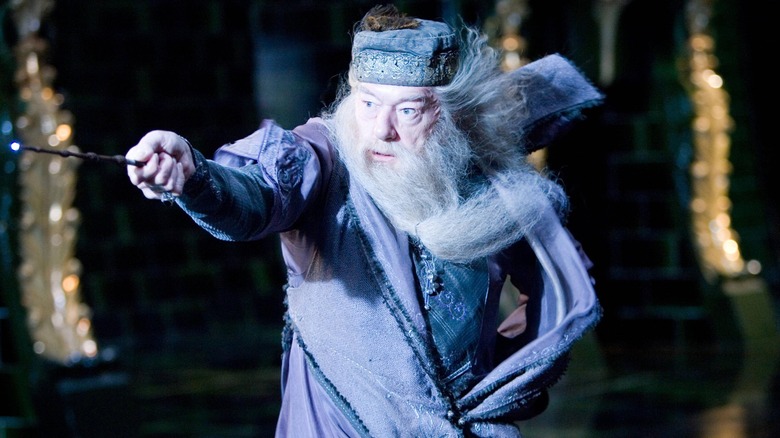
For other fans of pop culture, this might seem as though the rules for the Darksaber match those of the Elder Wand from the "Harry Potter" franchise. The "Harry Potter" series created by J.K. Rowling -- who is currently spending her time and money on an evil crusade against trans folks -- featured a wand that was supposedly better than all of the other wands (like the One Ring in "The Lord of the Rings"), and it could only be wielded by the wizard who had won it in a duel. As part of Albus Dumbledore's circuitous plan to defeat the dreaded Lord Voldemort, he sacrificed himself to Draco Malfoy, who became the unwitting master of the Elder Wand, even as Voldemort tried to wield it to its fullest power. When Harry Potter defeated Malfoy, the Elder Wand sensed this and switched its allegiance to Harry.
With the Elder Wand, the ownership determined your ability to wield the wand, but that doesn't seem to affect the Darksaber. Din Djarin wasn't particularly adept at wielding the Darksaber, even though he was its rightful owner. Bo-Katan had no claim to it, but had no trouble wielding it, either in "Star Wars: Rebels" or earlier in "The Mandalorian" season 3.
The magic in "Harry Potter" was real, so the rules of the Elder Wand were a lot harder to fudge. In the world of "Star Wars", however, the Mandalorian beliefs surrounding the Darksaber are rooted more in superstition than magic. But when a leader rises and is handed the Darksaber instead of winning it, and then your planet is then firebombed by the Empire, it's easier to buy into the superstition, even if you're Bo-Katan Kryze.
So, when Din explained the chain of title for the Darksaber to her, and why it was rightfully hers, the superstition was satisfied -- and with grim determination, Bo-Katan wielded the blade that would once again unite her people.
"Star Wars: The Mandalorian" is streaming on Disney+. New episodes arrive on Wednesdays.
Read this next: The Biggest Questions The Mandalorian Season 3 Needs To Answer
The post The Mandalorian's Darksaber Follows Harry Potter Rules, Apparently appeared first on /Film.
The 1993 Super Mario Bros. Movie Is Better Than The New Film In Every Conceivable Way
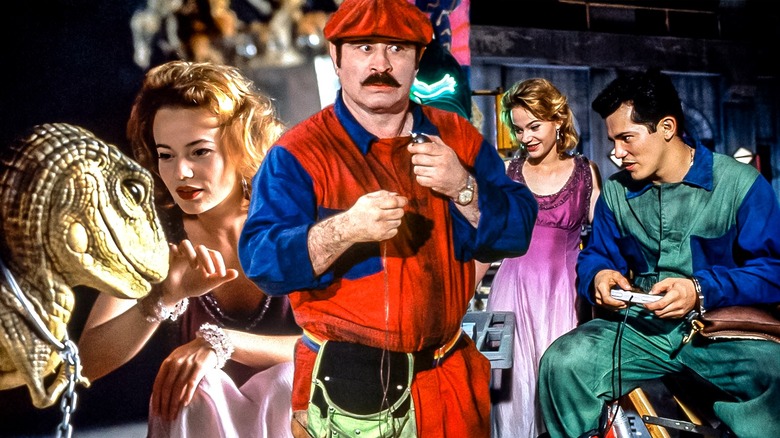
When Rocky Morton's and Annabel Jankel's 1993 film "Super Mario Bros." first hit theaters in May of 1993, it was immediately greeted with skepticism by Nintendo fans. The live-action adventure took characters and some of the more notable iconography from Shigeru Miyamoto's popular video game series and repurposed them into a bizarre, dystopian tale about a parallel universe, the evolutionary fate of dinosaurs, and fascism. The whimsical, cartoonish fairy tale elements of the 1985 game were absent, replaced by something steely, dank, and coated in athlete's foot-style fungus. Fans were concerned that the movie wasn't a faithful adaptation of the game, and it was rejected on this basis for many, many years.
Reviews weren't kind either. The film currently holds a mere 28% approval rating on Rotten Tomatoes. Gene Siskel called it one of the worst movies of 1993. It didn't help that "Super Mario Bros." was also a notoriously troubled production and numerous oral histories have emerged in recent years describing the debacle in detail. Many of these histories only cemented the film's "blunder" status in the popular consciousness, with many holding it up as the key example of why adapting video games to film remains, even at this late date, something of a fraught exercise.
In 2023 -- 30 years later -- directors Aaron Horvath and Michael Jelenic ("Teen Titans Go! To the Movies") had the courage to approach a cinematic Mario again, now in an animated form that guarantees more stringent visual fidelity to the source games. Miyamoto serves as producer on the new movie, and the game's characters and iconography (along with Koji Kondo's famous game music) are kept wholly intact. In the new film, the fairy tale whimsy remains. The new film is called "The Super Mario Bros. Movie."
The 1993 film remains vastly superior.
Working With What You Have
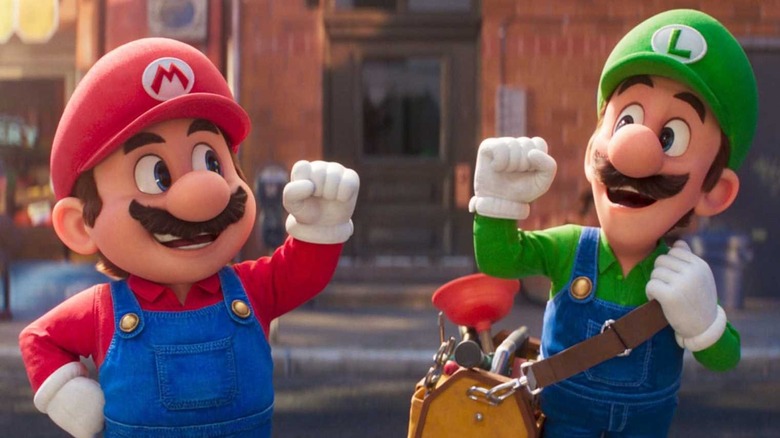
It should be mentioned that there are a great deal of 1993 "Super Mario" fans and apologists in the world. This author is one of them. The dank strangeness of the movie, paired with a very particular brand of clunky Hollywood artificiality makes "Super Mario Bros." a fascinating creative exercise. Given the technological advances of film visual effects in 1993, any attempts to make a live-action movie that resembled the Mario games would have emerged looking like a bad acid trip. The filmmakers, then, had to invent their own story out of some admittedly surreal and nonsensical video games that, really, had no story to crib from.
The premise of "Super Mario Bros." is strange, but creative: it seems the meteor that killed off the dinosaurs actually split Earth into two separate dimensions. In one of them, humans evolved to be the dominant species. In the other, the dinosaurs survived, and evolved into human-looking beings. Thanks to a rift between the worlds, a dinosaur princess is abandoned back on Earth as a baby. Years later, the princess (Samantha Mathis) is kidnapped back into the dinosaur dimension by the evil King Koopa (Dennis Hopper), who intends to unite his dimension with Earth's. It seems that he, a vicious fascist, has consumed his planet's resources to the point where only one major city remains. He needs to sap Earth in order to survive. Only a pair of Brooklyn plumbers (Bob Hoskins and John Leguizamo) can save the day.
The Mario Bros. are sassy, confused New Yorkers with their own voices and their own characters. This is fair play, as Mario was previously a mere video game sprite, more a cipher and a mascot than a character. Turning Mario into Bob Hoskins was a fine idea.
Who Cares About Mario's Life?
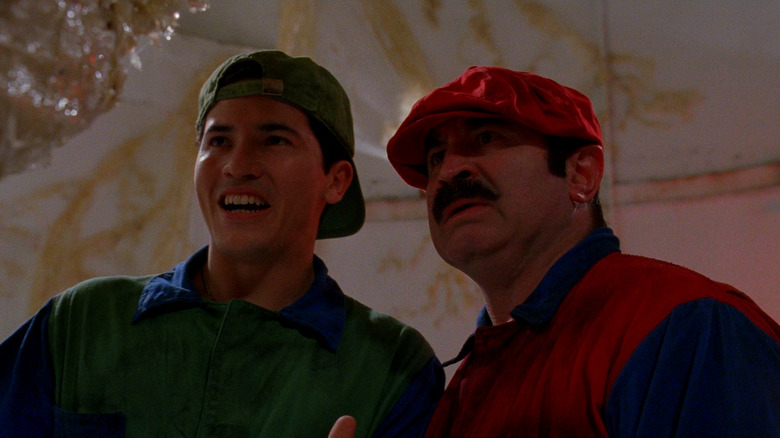
An easy question: who on Earth cares about Mario's life? Mario is not a character with a backstory, his own motivations, or his own dreams. Mario is a colorful, visually appealing, human-shaped figure invented for manipulation. Mario's character is dictated entirely by whoever is controlling him. If Mario makes it to the end of the game without dying, he is a determined and skilled hero. If I push him off a cliff, Mario is suicidal. If he leaps off of a dinosaur's back while the dinosaur is in midair over a chasm, and the dinosaur plunges to its death merely so Mario can grab a drugged-up mushroom, then Mario is a cruel a-hole.
The new Mario movie assigns the character with no personality beyond a bland, utterly generic form of determined action movie heroism. He wants a goal and will face challenges. Snore. In 1993, Mario was annoyed, baffled, skilled at plumbing, and had a love-hate relationship with his brother. He had a sassy Brooklyn girlfriend, and wore a yellow tuxedo well. Luigi, meanwhile, was a dim bulb, but knew Brooklyn well, and was a little shiftless but adapted to extreme scenarios. He was a youthful, more motivated character. The 2023 Luigi is merely afraid, and he loves his brother in a vague sense. He's skittish about their new plumbing business. There's so much less to work with.
The 1993 Mario and Luigi were hardly Hamlet, but they at least had human qualities. The 2023 Mario and Luigi are avatars like their video game antecedents. While this does give the new movie a great deal more fidelity to its source, it leaves viewers with character-free characters.
It's also worth saying that the 1993 movie was actually about something.
Anticapitalism Vs. Hypercapitalism
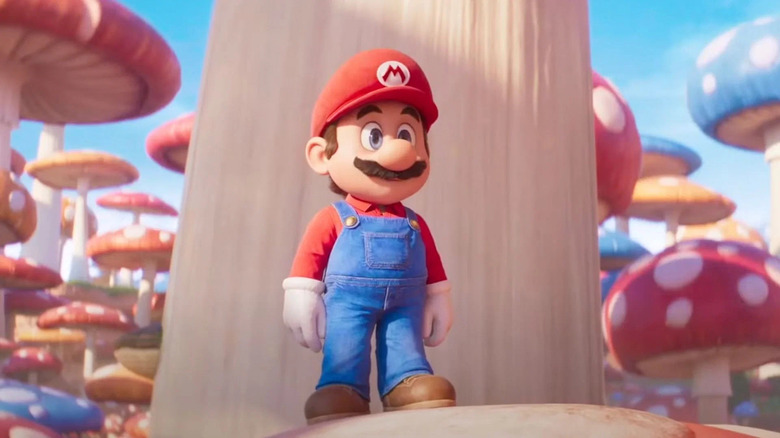
The reason why King Koopa wants to infiltrate Earth is that he has squandered all of his planet's resources. Koopa is a Nazi-like fascist who hangs propaganda posters all over his one remaining city, and promises to save his people with supernatural conquest. He's also germ-phobic and uses a special machine to devolve dissidents into mindless goombahs (something he does to Mojo Nixon early in the film). Mario and Luigi are nearly mugged by a woman who needs a great deal of Koopa coins. Poverty is rampant, and citizens distract themselves with fashion and dance clubs. It's a strange dystopia of all-consuming capitalism run amok.
As pointed out in a recent Paste article by Madeline Blondeau, the new "Super Mario Bros. Movie" is most certainly a corporate entity, a product used to sell a very specific brand of anti-reality "magic" to a mass audience. The 1993 film may have been anticapitalist in its construct, but the new film is merely an example of capitalism. "The Super Mario Bros. Movie" exists as the kind of distraction King Koopa would have used to placate the masses in 1993. The new film is, in its very existence, corporate propaganda. Even younger audience members will sense the vomitous odor of commercialism lurking in every scene. Leave the theater and buy Mario merch. Like a Koopa with a green shell, march off the precipice.
It's sad to think that a commercial tie-in movie from 1993 -- and one produced by Disney, no less -- can now stand as something with thought and integrity when compared to the bland nothingness of the new film. Is the 2023 film colorful and easy? Yes. Does it look like the games? Yes. Is it better than the 1993 film? Certainly not.
Read this next: The Best Animated Film Of Each Decade
The post The 1993 Super Mario Bros. Movie is Better Than the New Film in Every Conceivable Way appeared first on /Film.
When Insiders Are Not Buying Apple and NVIDIA, Why Are You?

The current stock market rally is perched on an increasingly precarious precipice, led by just a handful of mega-cap tech names, including Apple and NVIDIA. Meanwhile, company insiders continue to sell like there is no tomorrow. This dichotomy is never a good sign for a sustained bull run, particularly as insiders retain access to the most accurate information on a given company’s short-term prospects.
2 stonks are dominating the market
Yahoo finance pic.twitter.com/jaN1735r7Q
—
🅻🅴🆂🆂🅸
(@AlessioUrban) March 28, 2023
As is evident from the tweet above, big tech names, such as Google, Microsoft, Apple, Tesla, and NVIDIA, have been responsible for most of the gains in the S&P 500 index so far this year. In fact, with the combined weight of Apple and Microsoft in the S&P 500 index now having increased to 13.37 percent, with the iPhone manufacturer alone making up a whopping 7.17 percent of the benchmark index, the market has not been this dependent on just two stocks since 1978, when IBM and AT&T dominated investor psyche.

The snippet above details the stocks that carry the most weight in the S&P 500 index. Notice that all of the top five slots are occupied by mega-tech names. Together, these stocks make up a whopping 20 percent of the benchmark index.
So far this year, Apple is up around 32 percent, while NVIDIA shares have recorded gains of around 90 percent. Apart from the perceived safe-haven status of iPhones as a commoditized luxury in the face of growing macroeconomic headwinds, Apple shares have been gaining ground this year amid the company’s planned entry into the Extended Reality (XR) sphere – a catch-all term that encapsulates Virtual Reality (VR), Augmented Reality (AR), and Mixed Reality (MR) – via its new AR/VR headsets. Similarly, NVIDIA has been on a back-breaking tear as it seeks to capitalize on the current AI-focused hype train in the wake of OpenAI’s ChatGPT phenomenon. As we noted in a previous post, NVIDIA is working on launching its AI-as-a-service business model, which will allow firms to train their AI models in the cloud by leveraging NVIDIA’s GPUs. In fact, the firm seems to have given up on crypto and has fully re-oriented toward this new tech sphere – some say fad.
I wonder if the insiders know something?
h/t @Barchart pic.twitter.com/5Nz7tgnNNc
— Simon Ree (@simon_ree) April 5, 2023
This brings us to the crux of the matter. As is evident from the tweet above, Apple and NVIDIA insiders have not been buying the current rally. In fact, both stocks have not seen a single insider buy transaction in around a year.
Four big executives selling at $AAPL including Tim Cook, isn't bullish. pic.twitter.com/NzXnsNjpki
— Mat Roiss - NVDA RocketBear
(@InvestRoiss) April 5, 2023
Over the past three months, insiders have sold over 300,000 NVIDIA shares. In the same timeframe, Apple insiders have dumped nearly half a million shares. This buying drought and lack of confidence on the part of insiders does not bode well for the ongoing rally’s prospects.
Written by Rohail Saleem
Succubus: Hellish Orgy VR Banned on Steam – Valve says “no” to VR Hell Orgies

In a strange turn of events, Valve finally banned a game from their Steam platform. I could be facetious and pretend that this could be the start of something meaningful, that Valve could finally be closing the floodgates and bringing quality control to the platform, but we're four days too late for an April Fool's joke. Instead, I will report on banning Succubus: Hellish Orgy VR from their Steam platform.
Some of you may remember Madmind Studio's first title, Agony (reviewed by Francesco) and may remember the follow-up, Succubus. Succubus was a - is sexy the right word when evil toothy vagina monsters are around? Let's go with sexy. Succubus was a sexy game with you taking on the titular role of the Succubus, where you fight and fornicate your way through hell.

This original release was a little censored (Madmind blurred out the fun stuff) and didn't contain as much fornication as you would initially imagine. Still, the developers remedied this through the Succubus - Unrated free DLC. What did this DLC add to the game, which Valve explicitly supported by not taking action?
- healing mini-games, such as abortions and various genitals mutilation
- interactive sex minigames
- additional sex scenes in the form of cutscenes
- additional sex scenes depicting demons and humans, visible in game's levels
- no censorship on the character's breasts and genitals
- additional "hellish orgy" orgy scene
Succubus: Hellish Orgy VR was the full release of the unrated game for your pleasure(?) in VR. I'm unsure if it's taking the abortions and genital mutilation into virtual reality instead of on a flat screen that made Valve squeamish. I wonder if they have not looked at the list of pornographic games they've allowed on Steam lately. Or, even worse, the random dross. Still, squeamish they have become. The simple statement from Madmind Studio reads as follows:
Steam has decided to ban the game without giving us the ability to make changes/patches/censorship
Madmind isn't making any stand against Valve because of this, which is smart because Agony VR is set to release today, with a sequel currently on Kickstarter. Succubus: Hellish Orgy VR still aims to release on other VR platforms. I can only think that Valve seems a little disjointed in its approach. We already know there's no such thing as quality control on Steam, so why even pretend that they care?
This was the story of a game on Steam getting a VR version banned. Next on our list is Carnal Instinct. In other news, I also previewed one of those adult games a while back, Subverse.
Warning: Most of these links are very NSFW and certainly not for the eyes of anybody who isn't already finished with this world (or just not for children).
Written by Chris Wray
No Man’s Sky: INTERCEPTOR Update Adds a New Starship Class While a Mysterious Corruption Sweeps Through

As we've often said here on Wccftech, No Man's Sky is the gift that keeps on giving. Following an underwhelming launch in many regards, the independent developer Hello Games rolled up their sleeves and began pumping massive free updates that have massively improved and expanded the game in the following years, completely turning players' sentiment around the title.
The Fractal update only shipped a few weeks ago, delivering fully integrated PlayStation VR2 support and AMD FSR 2.0 support on PlayStation 5 among other things. Still, today Hello Games is here to announce yet another update.

Dubbed INTERCEPTOR, this new patch aims to provide players with a new gameplay experience while also adding to the lore of No Man's Sky. On that note, there's a new and mysterious corruption sweeping throughout the galaxy, affecting many worlds with some kind of purple haze. These worlds now feature weird crystals protruding from the ground, but that's just the tip of the iceberg. The Sentinel guardians have been twisted by the corruption, and there are brand new enemies, such as spider-like creatures and their progeny, as well as corrupted drones equipped with cutting-edge explosives, flamethrowers, and even stealth technology.
Of course, with new enemies come new rewards, such as secret equipment, new building types, and crashed Interceptors that can be salvaged. This new starship class is said to be the most varied available to date in No Man's Sky. They're powered by Sentinel technology and require new resources, but they're also geared with unique abilities like Anti-Gravity Well and Crimson Core. The update also adds Sentinel multi-tools and large, winged Sentinel jetpacks.

Expert players will want to engage in high-intensity space combat against the big Sentinel Capital ships, which will be challenging to defeat but provide great rewards and also clear up the player's wanted status.
Another addition introduced with the previous update, the Wonders Catalogue, is being expanded in the INTERCEPTOR update. No Man's Sky players can now bookmark their own favorite planets, creatures, flowers, and much more with the newly added Personal Records section of the Wonders Catalogue.
The PS VR2 version of the game has had its visuals improved, and wrist interface controls have been introduced. On a technical note, the INTERCEPTOR update delivers new under-the-hood technology for Xbox consoles that should provide a smoother, more consistent frame rate during the most taxing situations.
The update is live now and free for all No Man's Sky players. On a final note, Hello Games even said they can't wait to show the community what else they've got in store for the rest of the year, which almost sounds like a threat at this point - at least to the players' real-life commitments.
Written by Alessio Palumbo
Do You Tip Every Time You’re Asked?

Have you noticed how more businesses are asking for tips these days? If you’re buying a coffee, you can’t pretend you don’t notice the tip jar like you could in the old days of 2017. The rise of point-of-sale digital kiosk transactions means you have to actively choose whether to give an extra 15 or 20%, all while the…
Dress for Success: A Guide on What Not to Wear to an Interview
So, you have been invited to a job interview. That’s great news! Your potential employer has obviously seen something in your resume or application form that gives them cause to consider you for a job. Of course, that job you have applied for isn’t yours for the taking just yet. You still have to prepare […]
The post Dress for Success: A Guide on What Not to Wear to an Interview appeared first on I Will Teach You To Be Rich.
Happy 10 to Hannibal
I've been dying to do a re-watch of the series but time to "watch things" that aren't work has become so scarce these days -- that said the whole damn thing is on Hulu if you're so inclined, or if I am so inclined once I have the time. There are so many images burned deep into the tasty, tasty meat of my brains that I want to re-visit. I remember being in awe of what Bryan was getting away with on network television every single week. Soon enough we'll get to see what he'll get away with for his Friday the 13th series, which should be something indeed, but until then I'll just wish this brilliant perfect series a happy birthday and then ask the eternal question...
After Disrupting Businesses, Google Drive's Secret File Cap is Dead for Now
Read more of this story at Slashdot.
Defender for Endpoint and disconnected environments. Cloud-centric networking decisions
About this article
This article is part of a group of articles regarding Defender for Endpoint and disconnected environments. The first two articles can be found here and here.
The objective of this article, along with the two previous articles, is to provide you with a better understanding of Defender for Endpoint and how it works in a disconnected environment. This requires a mental shift in our understanding of what “risk” means with a cloud-first product.
Looking at how Defender for Endpoint is designed we can make a few observations:
- Defender for Endpoint is a cloud-based EDR and AV solution that ties into the larger Defender XDR solution.
- Defender for Endpoint requires internet access to function properly but will cache information on a device and upload when connectivity is restored.
- Defender for Endpoint requires a well-architected and understood networking environment to function properly.
Build the deployment story
As you’re planning your Defender for Endpoint deployment, consider the following points as a lose guideline to help you avoid common pitfalls.
- Review the documentation specifically the plan deployment section.
- Reach out to Microsoft FastTrack for Microsoft 365 for deployment assistance.
- Involve the right stakeholders. Prepare Microsoft Defender for Endpoint deployment.
- Understand how your organization currently handles cloud-centric products.
- Understand the networking requirements of both the product and your organization.
The aim here is not to intimidate you, but rather to ensure that you grasp the "mental shift" and comprehend how various Microsoft 365 products work together to secure your disconnected devices. Let's begin by focusing on the essential aspect: the "mental shift."
The Mental Shift
Historically, specific server workloads are likely to have been protected behind a firewall within a physical datacenter location. These were generally not allowed to have any external connectivity unless there was a specific application or business case that required this (The traditional model).
Fast forward a few years. Now most companies take a security first approach and need to introduce modern security services to mitigate both internal and external threats (Today’s model). These modern security services are likely to be cloud services that will require some level of connectivity to ensure that protection is implemented.
Organizations are often concerned about configuring external connectivity for these servers as there may be regulations or existing security controls in place that need to be reviewed as part of this change. Although organizations are aware of the necessity to assess their current controls, the intricacies of modern networks demand stronger and more comprehensive security solutions.
The Network Infrastructure
It is essential for an organization to have a comprehensive understanding of its network configuration, including how devices access internet services and the overall flow of traffic in and out of the environment. Here are some questions to consider when deploying Defender for Endpoint in any environment, with a particular focus on semi-disconnected or fully disconnected environments:
- How are you handling or going to handle Windows Update in the disconnected environment?
- How are you going to manage device policies? Intune or Microsoft Endpoint Configuration Manager?
- A static proxy for Defender for Endpoint will ensure only Defender for Endpoint traffic crosses the proxy.
- Certificate Revocation Lists will require their own configuration in a disconnected environment.
- If you’re using alternate routing to Azure or Microsoft 365 services make sure you optimize for Defender for Endpoint, we suggest bypassing this routing to ensure traffic flows smoothly.
- A system wide WinHTTP proxy can be safely set on an endpoint if access to Microsoft and third-party endpoints are tightly controlled via proxy or gateway.
- Defender for Endpoint, Azure AD Hybrid require system level proxy configurations that are unauthenticated.
- For some tasks (like downloading software updates for the classic pc agent), Intune requires unauthenticated proxy access.
- Windows Update requires special treatment and configurations to ensure your proxy servers are not being overloaded.
Below is an example of a complex networking schema featuring Defender for Endpoint. Although this deployment resembles a typical customer setup, it was conducted in a lab environment and served as a basis for simulating traffic in the two previous articles.
Proxy considerations as they relate to Defender for Endpoint:
The diagrams below illustrate various proxy configurations that can be used with Defender for Endpoint, along with their implications for other products necessary for the proper operation of a Windows endpoint. The diagrams are intended to highlight the differences between system-level (WinHTTP), user-level (WinINET), and static-level (Registry/Group policy-based static) proxy configurations. More information on these configurations can be found in the following articles:
- Disconnected environments, proxies, and Microsoft Defender for Endpoint
- Defender for Endpoint and disconnected environments. Which proxy configuration wins?
The above diagram assumes that all traffic through the proxy is approved for various endpoint requirements, such as Windows Update, Intune, Azure AD, and Defender for Endpoint traffic. However, this may not be the case for all organizations.
The diagram above highlights that the user-level (WinINET) proxy configuration only permits certain Defender for Endpoint traffic, while blocking all other services on the endpoint. This approach may suffice if you do not intend to use Live Response on your endpoints, or if the endpoints handle Windows Update differently and do not require Intune or Hybrid Azure AD. However, keep in mind that this configuration will require the endpoint to cache Defender for Endpoint signals until a user connects. It is recommended to review the plan deployment section of the Defender for Endpoint documentation to gain a deeper understanding of the implications of this decision.
The diagram above illustrates the impact of a static proxy configuration using either group policy or a registry edit. As shown, only Defender for Endpoint traffic is allowed to cross the proxy. This option is beneficial in cases where you have an existing infrastructure configuration that already handles Windows Updates, endpoint configuration policies, and compliance policies, and you are not planning to move to a hybrid Azure AD joined state. However, please note that this configuration assumes that the other services required for the proper functioning of the endpoint are managed through an alternate mechanism, such as Microsoft Endpoint Configuration Manager.
Other product considerations
In the subsequent sections, we have highlighted key considerations when deploying Defender for Endpoint. These sections specifically address related products and how they may be adversely affected in a disconnected environment. Keep in mind that Defender for Endpoint is a cloud-first product, and it is part of a larger suite of products within Microsoft 365. Therefore, it is important to consider these products, as well as standard services like Windows Update and certificate updates, when planning your deployment.
Microsoft Intune
Allow the following hostnames through your firewall to support Security Management for Defender for Endpoint. For communication between clients and the cloud service:
- *.dm.microsoft.com - The use of a wildcard supports the cloud-service endpoints that are used for enrollment, check-in, and reporting, and which can change as the service scales.
- *.manage.microsoft.com, manage.microsoft.com – Intune Service endpoints.
- Additional endpoints:
- login.microsoftonline.com
- *.officeconfig.msocdn.com
- config.office.com
- graph.windows.net
- enterpriseregistration.windows.net
Azure Active Directory
If you’re planning on using Microsoft Intune to manage policies on these disconnected devices, then there are other considerations that need to be made. As a Hybrid Azure AD Joined Device there are some networking requirements living behind a proxy. The following URLs must be accessible for the devices inside your organization.
- https://enterpriseregistration.windows.net
- https://login.microsoftonline.com
- https://device.login.microsoftonline.com
- https://autologon.microsoftazuread-sso.com (If you use or plan to use seamless SSO)
- Your organization's Security Token Service (STS) (For federated domains)
The above URLs require access via SYSTEM account using the machine context. Make sure your proxy server supports machine context authentication, otherwise allow unauthenticated traffic just as you would with Defender for Endpoint. WinHTTP proxy will also be required for this scenario. If, however, you are managing your endpoints with Microsoft Endpoint Configuration Manager (SCCM) then policies will be handled on-premises, and this won’t be necessary, and you’ll be able to onboard the devices to Defender for Endpoint. Ultimately it depends entirely on your end management objective and how cloud-centric your organization will be.
Use the Test Device Registration Connectivity script to validate if your devices can access the required Microsoft resources under the system account.
Windows Updates
Microsoft Defender for Endpoint, being a cloud-centric security product, necessitates that your devices remain up to date. Many customers typically have a robust maintenance solution in place for their isolated environments. Implementing Defender for Endpoint presents an opportune moment to review and assess the efficiency of your update process, ensuring its smooth operation or identifying the need for adjustments or supplementary configurations. Key considerations for Windows Update when operating behind a proxy include:
- Proxy servers must accommodate Partial Range Requests since Windows Update employs WinHTTP with Partial Range requests (RFC 7233) to download updates and applications from Windows Update servers or on-premises WSUS servers.
- If a proxy is configured at the user level (WinINET), connections to Windows Update will be unsuccessful. It is crucial to ensure proper proxy configuration to maintain seamless update processes.
- Allowing Partial Range requests is essential for the efficient functioning of delta patching. Without this support, updates will require downloading a larger amount of content than necessary, resulting in increased bandwidth usage and longer update times.
- You might choose to apply a rule to permit HTTP RANGE requests for the following URLs:
- *.download.windowsupdate.com
- *.dl.delivery.mp.microsoft.com
- *.delivery.mp.microsoft.com
The above is referenced in the following documentation: Windows Update issues troubleshooting - Windows Client | Microsoft Learn
Summary
This article provides guidance on understanding the functionality of Defender for Endpoint, a cloud-first product, and the need for a mental shift towards modern security services. The article outlines planning and deployment recommendations, such as involving stakeholders, understanding networking requirements, and reviewing the documentation. Additionally, the article covers considerations for other Microsoft products like Intune, Azure Active Directory, and Windows Updates in relation to Defender for Endpoint. Overall, this article offers an approach to deploying Defender for Endpoint and discusses the requirements of other Microsoft products in a disconnected environment.
References
Disconnected environments, proxies, and Microsoft Defender for Endpoint
Defender for Endpoint and disconnected environments. Which proxy configuration wins?
RFC 7233: Hypertext Transfer Protocol (HTTP/1.1): Range Requests (rfc-editor.org)
Windows Update issues troubleshooting - Windows Client | Microsoft Learn
Network endpoints for Microsoft Intune | Microsoft Learn
Test Device Registration Connectivity - Code Samples | Microsoft Learn
Configure hybrid Azure Active Directory join - Microsoft Entra | Microsoft Learn
Microsoft Defender for Endpoint - Proxy Service URLs (Commercial) (live.com)
Microsoft FastTrack for Microsoft 365
Prepare Microsoft Defender for Endpoint deployment
Discover a new era of security with Microsoft at RSAC 2023
Microsoft Security will be at the 2023 RSA Conference and we’d love to connect with you there. In this blog post, we share all the ways you can—plus, attend the Pre-Day with Microsoft and watch the Microsoft Security Copilot demo.
The post Discover a new era of security with Microsoft at RSAC 2023 appeared first on Microsoft Security Blog.
Meet Your Maker Review – Building a Better Deathtrap

Behaviour Interactive is one of the few developers that really gets how to run a live service. The Montreal-based studio has done a remarkable job of keeping Dead by Daylight alive and kicking with a steady drumbeat of compelling content, so their new live-service Meet Your Maker naturally comes with a lot of expectations attached.
Rather than another asymmetric horror game, Meet Your Maker is all about building and raiding, as players create their own dungeon-like Outposts and try to steal the goodies from the Outposts of others. Is this sci-fi experiment destined to become another long-term hit for Behaviour Interactive? Or has a move away from the horror genre dulled their usual deadly precision?

Meet Your Maker casts players as an unnamed “Custodian” for a Chimera – a strange fetus-like creature that subsists on precious Pure Genetic Material (or “GenMat”), which, for some reason, is extracted from the ground in the world the game takes place in. While Meet Your Maker contains some rather detailed logs detailing the lore of its world, don’t go into the game expecting any sort of real narrative. Your goal is to collect GenMat either by establishing extraction Outposts or stealing it from others. End of story.
With its big guns, mutant enemies, and blocky Outposts, Meet Your Maker certainly resembles first-person shooters of yesteryear, but looks can be deceiving. While the game’s basic controls and movement bring to mind an id Software game – players move around at a brisk pace and can double-jump and deploy a grappling hook to get around – you’ll quickly realize this isn’t exactly Quake. Your character dies from a single hit and your starting gun has an ammo capacity of two. No, not two clips of ammo, two shots, total. Your gun’s range is also pathetic, with your shots often plopping to the ground like a wad of wet toilet paper well short of whatever enemy you’re aiming at. You’ll increase your abilities as you play, but the scope of these improvements are limited. This game is never going to become Doom Eternal.

Thankfully, most of the Outposts I’ve encountered have focused more on troll-ish trap placement rather than intense gunplay. Shorter, tricky, replayable challenges seems to be what the game’s mechanics are building tools were mainly designed for. Really, most of the Outposts I took on felt like they had more in common with a Mario Maker speedrun than a classic Doom or Quake level. Granted, there are folks making Outposts that are larger or more combat-focused, but they felt like a poor match for the way the game actually plays. You can make a classic Quake-style level in Meet Your Maker, but most of them just aren’t going to be very fun to play.

Thankfully, when Outposts didn’t try to get too ambitious, I found dying and retrying (and retrying and retrying) in order to figure out their tricksy traps fairly satisfying. Okay, sure, I also did my fair share of cursing, but that’s part of the fun. You can also breathe a sigh of relief – this isn’t a roguelike. There isn’t really any punishment for dying at all, as you get to keep all the XP and resources you earn during each failed run, so you can keep retrying without that extra layer of frustration.
On the other side of the Meet Your Maker coin, you have the building, which is fairly versatile but comes with its own caveats and limitations. You don’t build your Outposts entirely from scratch but rather purchase various “Burial Sites” that already have half-finished structures that you can’t entirely remove. There’s something to be said for providing a foundation for people to build upon, but it seems like most people largely ignore these pre-existing blocks, simply building their Outposts on top of them.

Rather than providing an editor that offers a free and full overview of your creation, you actually have to move around the Outpost to place blocks (thankfully, you can at least fly while in building mode). You could argue this gives you more of a sense of how it feels to explore your Outpost as you’re building it, but placing blocks is often awkward and it’s easy to get lost in your own half-finished creation.
Additionally, in order to upload your Outpost for others to play, you must provide a clear path for your robot Harvester to get to the GenMat supply. Harvesters don’t set off traps, but they can’t jump or navigate complex terrain, which means there always has to be a relatively simple route to the GenMat. While you’re free to include side paths and shortcuts, you can’t make an Outpost that requires the player to figure out a complex route or do any platforming. I get the intent behind the Harvester, but I feel like you should also be able to verify your Outpost simply by completing it yourself, ala Mario Maker.

Successfully completing raids and passively offing other players with your Outposts will earn you XP and various resources. Things you can level up include your individual Custodian, the vendors back at your Sanctuary, all your gear, and the Chimera. You also have an overall Tribute level, can progress the Raid map, and earn seasonal Rank Points and Prestige levels for each individual Outpost you build. Phew! It’s enough to make your head spin. At least none of this grinding seems to be designed specifically to push additional spending. New items and cosmetics, most of which will be earnable via gameplay, but will also be available for purchase, have been promised for the future. That said, Meet Your Maker doesn’t have a battle pass, loot boxes, or a garish in-game cash shop like most games of this sort.
What wasn’t entirely clear as I waded through all these progression systems is what the overall point of it all was. I understand what Behaviour’s goal is – keep people playing and unlocking new Meet Your Maker content indefinitely – but most live services give you some overarching goal, or series of goals, beyond “keep on grinding.” Like, what’s going to happen if I keep stuffing this weird mutant fetus in a tube with mystery genetic material? I don’t think it’s an unfair question to ask!
I initially didn’t attach a score to this review, as I wanted to see how Outpost creation evolved once the full community was able to jump in, and unfortunately, the results weren’t as transformative as I was hoping. While many of the Outposts uploaded in the week since launch are larger and more visually cohesive than those I tackled pre-release, they don’t actually feel all that different. In something like Mario Maker, creators have found ways to offer truly novel challenges that force you to rethink how you play, but it seems like this game’s building tools just don’t have that kind of versatility. I felt this while building too – after making three Outposts, my inspiration started to wane and I simply used the Prestige system to continue collecting XP and resources from them. Technically, you can play Meet Your Maker forever, but I’m already starting to feel the game’s patterns wear on me. Again, content updates are coming, but it remains to be seen whether they provide enough new building blocks.
This review was based on a PS5 copy of Meet Your Maker from publisher Behaviour Interactive.
The Invincible is way more exciting now I know it "isn't a 1:1 adaptation" of Stanislaw Lem's sci-fi thriller

When Marek Markuszewski had finished working on The Witcher 3's Blood And Wine expansion, he wanted to go back to basics and make something by himself, Starward Industries' chief marketing officer Maciej Dobrowolski tells me at GDC. Something that would capture the same kind of cultural Polish heritage as The Witcher - originally adapted from Andrzej Sapkowski's six-strong series of novels - but that would take him on a new, more introspective kind of development journey. It took a while to find, but after a fateful encounter with an investor who'd just sailed across the Atlantic with only a copy of Polish sci-fi writer Stanislaw Lem's The Invincible for company, the signs were too good to ignore, Dobrowolski says. And after spending the best part of a year convincing Stanislaw Lem's son (and current rights holder) of the same thing, Markuszewski finally had his something - and a new partner to help him realise it.
"People tell us, 'Don't fuck it up, this guy's important,'" Dobrowolski continues, and no wonder. During the course of our conversation, Lem is described as both a "national treasure" and "mandatory reading in high school" for Polish students, and his hallowed cultural status is something the team's "had to deal with" in bringing the book to life. Despite all this, though, Dobrowolski insists this "isn't a one-to-one adaptation" of Lem's interstellar rescue story gone wrong, and that fans of the book will still find some surprises on the surface of Regis III as they explore its strange canyons, caves and crash sites.
James Gunn Explains Why 'Superhero Fatigue' Isn't Really Superhero Fatigue
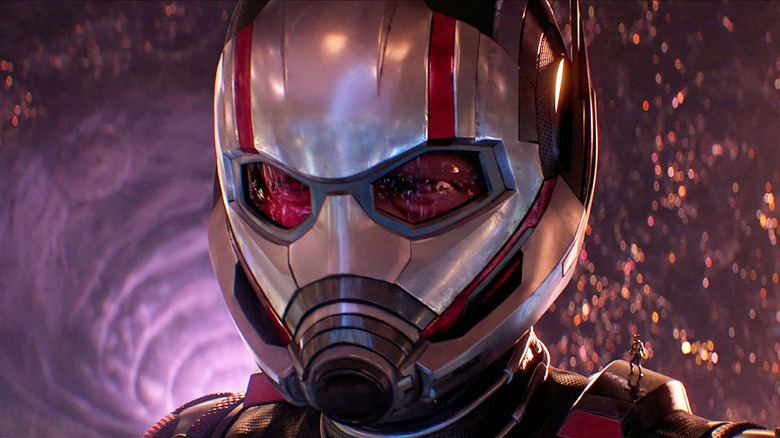
James Gunn is acutely aware that superhero movies might not hold the same broad appeal they did only a couple of years ago. The filmmaker, who is now the co-chair of Warner Bros.' newly revamped DC Studios along with producer Peter Safran, is set to spearhead the creative direction of the company's film slate. However, due to the recent box office disappointments of both Marvel and DC properties, Gunn's got a lot of pressure to resurrect what may be a dying genre.
Superheroes have been going strong for more than a decade. Marvel Studios has turned the Marvel Cinematic Universe (MCU) into a cultural juggernaut, releasing some of the highest-grossing films of all time and popularizing the concept of a shared series of spin-off films. Though not as critically successful, DC Films has also pulled in big box office numbers over the years, forming its own universe previously known as the DC Extended Universe.
Considering both Warner Bros.' "The Batman" (which is unaffiliated with the DCEU) and every MCU film released in 2022 were among the top 10 highest-grossing films of that year, it might be too early to herald the end of the superhero movie. Still, the under-performance of Marvel's "Ant-Man and the Wasp: Quantumania" doesn't fare too well for the longevity of the studio's post-"Avengers: Endgame" story plan. Coupled with the back-to-back financial losses of DC's "Black Adam" and "Shazam! Fury of the Gods," it seems superhero cinema at large could stand to shake things up.
Characters First
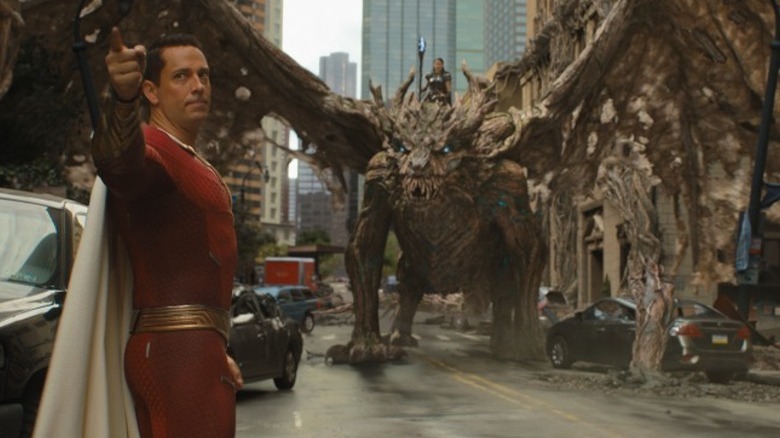
James Gunn sees the looming "superhero fatigue" as being due to the formulaic repetition of superhero stories and not of the superheroes themselves. In an interview with Rolling Stone, the filmmaker stated that:
"It doesn't have anything to do with superheroes. It has to do with the kind of stories that get to be told, and if you lose your eye on the ball, which is character. We love Superman. We love Batman. We love Iron Man. Because they're these incredible characters that we have in our hearts. And if it becomes just a bunch of nonsense onscreen, it gets really boring."
He argued that it's not necessarily superhero films that audiences are growing tired of, but "spectacle films" and "the grind of not having an emotionally grounded story." That reasoning explains why the character-heavy blockbusters "Top Gun: Maverick" and "Avatar: The Way of Water" had so much appeal and ensuing success. As Gunn put it:
"If you don't have a story at the base of it, just watching things bash each other, no matter how clever those bashing moments are, no matter how clever the designs and the VFX are, it just gets fatiguing, and I think that's very, very real."
Awesome Mixing It Up
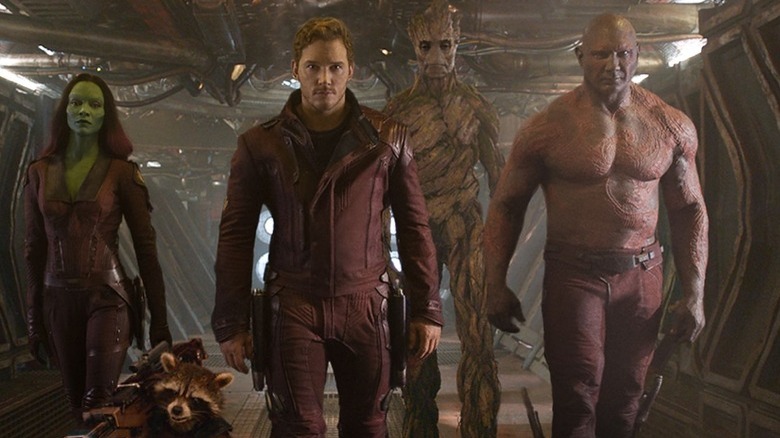
Jame Gunn brought up his own contribution to the MCU, the highly successful "Guardians of the Galaxy" films, as examples of what he's trying to accomplish while working with DC Films. Instead of telling a standard superhero story, he sought to make "a space opera" and "a family drama," focusing on the emotional connection between a group of outcasts. Gunn stated that his inspiration was "Star Wars," which similarly changed the industry's approach to blockbuster filmmaking:
"I felt like movies were getting a little repetitive and you needed a science-fiction epic that was colorful and bright, what 'Star Wars' was to me when I was 11. Instead of a Chewbacca and a C-3PO, it was a talking tree and a gun-wielding raccoon. I felt like I was putting something out there that was going to work. Which doesn't mean that in the middle of shooting, I didn't wake up at 3 a.m. in a cold, sweaty panic."
Gunn is currently slated to direct "Superman: Legacy," which will focus on a young Superman growing up in Smallville and Metropolis and learning how to be the human Clark Kent. He assured people that it will be "quite different" than "Guardians," but his goal is to continue to concentrate on an emotional character arc first and foremost. In addition, his plans for the rest of the DC Films lineup, which feature characters like the morally dubious antiheroes of "The Authority" to the horror monsters of "Swamp Thing," also seem to refuse to stick to usual superhero trappings. The former director of Troma B-movies may yet prove that superhero movies aren't dead. They just need a fresh dose of soul.
Gunn's final "Guardians" film, "Guardians of the Galaxy Vol. 3," hits theaters on May 5, 2023.
Read this next: The 11 Best Pre-MCU Superhero Movies
The post James Gunn Explains Why 'Superhero Fatigue' Isn't Really Superhero Fatigue appeared first on /Film.
Physicists Created 'Slits In Time' and Discovered 'Unexpected Physics'
Read more of this story at Slashdot.
Microsoft Tightens OneNote Security by Auto-Blocking 120 Risky File Extensions
Melanie Lynskey Teases Shauna's 'Profound Arc' In Season 2 Of Yellowjackets

This article contains spoilers for "Yellowjackets" season 2.
Shauna Sadecki, née Shipman, seems like the most normal of the Yellowjackets. Played by Melanie Lynskey in the present and Sophie Nélisse in the past, she's a stay-at-home mom 25 years after being stranded in the wilderness alongside her high school soccer teammates. But looks can be deceiving and Shauna is anything but harmless. There's a reason the show's creative team cast Lynskey, who excels at unhinged characters, after all. Last season, she murdered her lover Adam (Peter Gadiot) and covered it up without blinking. The season 2 premiere then revealed the young Shauna was the first of the group to indulge in cannibalism — she ate Jackie's (Ella Purnell) frozen ear.
Speaking to Harpers Bazaar, Lynskey revealed she didn't know the trajectory of Shauna's arc this season when the cameras started rolling. However, by mid-season, she sat down with the series' creators Ashley Lyle and Bart Nickerson, and co-showrunner Jonathan Lisco so they could fill her in. Lynskey recalled asking, "Where does this end? What's the culmination of all this craziness? And it's really beautiful."
Two episodes into the sophomore season of "Yellowjackets," past and present Shauna have been alienating those around them while keeping secrets. Where can we expect this to go?
The Weight Of Motherhood
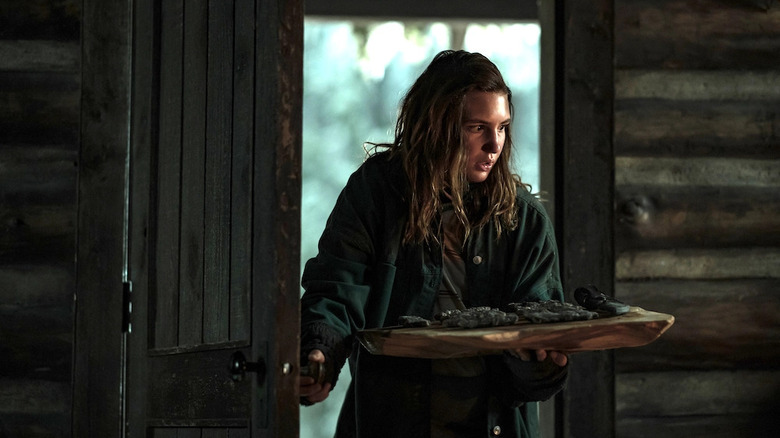
While she kept her answer vague and spoiler-free, Lynskey gave some detail on the themes of Shauna's season 2 arc:
"There's a profound arc to her character this season, dealing with grief and motherhood and her experience in the wilderness and whether she thinks she's a good mother or even a good person."
"Motherhood" makes sense, because it's something that's troubling Shauna in both timelines. In 1996, she's pregnant after sleeping with her future husband Jeff (Warren Kole/Jack DePew) before the crash, who happened to be dating her best friend at the time. Worse, she's now miles away from any doctor. After considering an amateur abortion in season 1, she's decided to have the baby and they're set to arrive this season. Now, Lynskey highlighting "grief" as another of Shauna's emotions hints this won't end well. While the cast has confirmed there will be no baby-eating on "Yellowjackets," that doesn't mean the kid will survive either.
In the present, Shauna has become increasingly alienated from her daughter Callie (Sarah Desjardins). They were already hostile in season 1, but when Callie learned of Shauna's affair with (and then murder of) Adam, it got worse. Shauna questioning if she's a "good person" or a "good mother" is natural after this. And is she? Under normal circumstances, not really, but she's been through some exceptional circumstances.
Living With Guilt

Shauna clung to Jackie, even keeping her corpse around and talking to it, because of guilt. The two had been best friends in life, but their last conversation before Jackie froze to death in the season 1 finale was a fight. It's clear Shauna feels responsible for Jackie's death since she's the one who pushed her to sleep outside. Back in season 1, the adult Shauna was shown to have an annual ritual of meeting Jackie's parents for brunch, something she did only out of obligation. Considering we now know that Shauna literally ate their daughter, her unease around them makes sense.
Once Shauna wakes in episode 3 and realizes what she and the others did to Jackie's body, her guilt will definitely grow ... or will it? The adult Shauna has shown a talent for compartmentalization; she doesn't feel bad about Adam's death (she did kill him because he thought he was blackmailing her), only worried about getting caught. Her experience in the wilderness is what taught her to think like that.
I think of the "Yellowjackets" leads, Shauna has changed the least since high school (well, besides Misty). She's harmless on the surface, but with a vicious streak. Shauna isn't ruthless enough that she lacks regret, but when push comes to shove, she's a survivor. That's why she came back from the wilderness alive. Taking Lynskey's comments into account though, Shauna's repressed guilt might be boiling over soon. Word's out on if her realization of guilt is profound enough to change her for the better.
"Yellowjackets" streams on Showtime on Fridays and airs on television on Sundays at 9 p.m. EST.
Read this next: The 30 Best Horror TV Shows Of All Time
The post Melanie Lynskey Teases Shauna's 'Profound Arc' In Season 2 Of Yellowjackets appeared first on /Film.
Capita, Company Providing UK's Nuclear Submarine Training, Says It's Successfully Contained 'Cyber Incident'
Read more of this story at Slashdot.
Heat 2 Officially In Development With Adam Driver And Director Michael Mann
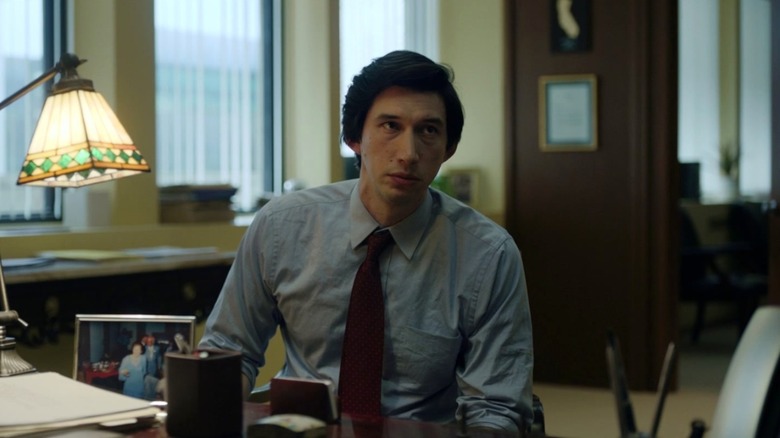
This is not a drill: "Heat 2" may finally be happening. That's right, nearly 30 years after director Michael Mann delivered one of the greatest crime films ever made with 1995's "Heat," Warner Bros. is getting behind a potential new film. What's more, none other than Adam Driver ("Star Wars: The Force Awakens," "House of Gucci") is in talks to star. And that could just be the tip of the iceberg, but we'll get to that.
The news comes to us via Deadline, who confirms rumors that have been swirling for weeks regarding the status of the project. Warner Bros. is backing the development of the film, which would be based on 2022's novel "Heat 2," which was written by Mann and Meg Gardiner (read our review of it here). Driver, meanwhile, would star as a young Neil McCauley, who was played by Robert De Niro in the original. It's worth noting that Driver is currently working with Mann on "Ferrari," which seemingly went well enough for them to collaborate again.
Other rumored casting has popped up in recent weeks, with names like Austin Butler ("Elvis") and Ana De Armas ("Blonde") being circulated. While nothing else is confirmed, Driver's good name indicates that this project could attract more big-name talent. It's also worth noting that New Regency would have the option to co-finance the film since they were part of the original production, but Warner Bros. is solely involved at this time.
Part Sequel, Part Prequel, All Michael Mann
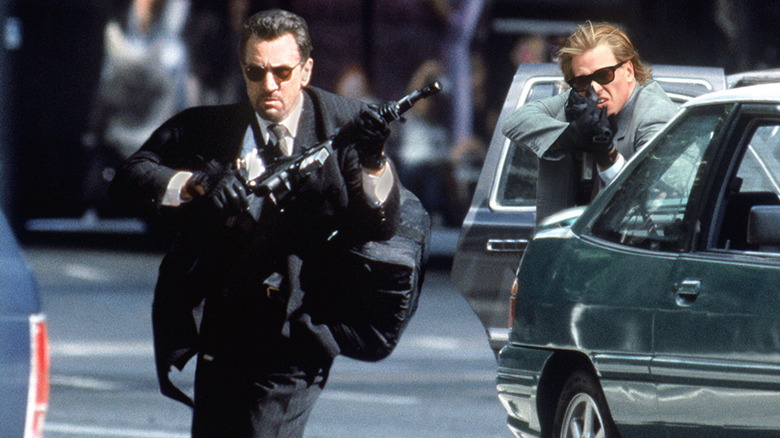
As fans of "Heat" may care to note, McCauley died at the end of the first film at the hands of Al Pacino's Vincent Hannah, concluding one of the greatest games of cat and mouse in cinematic history. So, how is a sequel going to be possible? Well, the novel takes an interesting approach, serving as part sequel, part prequel. Presumably, Driver would play McCauley before the events of "Heat," with another actor taking on the role of Hannah, stepping in for Pacino. There's also the matter of Val Kilmer's Chris Shiherlis, who has a major role in the novel.
For what it's worth, Mann has been very clear about the fact that he had every intention of turning the book into a film, saying last year, "It's totally planned to be a movie ... Is it a modest movie? No. Is it a very expensive series? No. It's going to be one large movie." In its day, "Heat" was a sizable hit, but that was a long time ago. Would Warner Bros. actually see this expensive movie as a good investment? On that front, the book was a best-seller and earned rave reviews, so we do have some indication that this could work commercially. Particularly if Driver is just the tip of the iceberg of an A-list cast. Here's hoping.
"Heat 2" the movie does not yet have a release date, but "Heat 2" the book is on shelves now.
Read this next: The 14 Greatest Action Movies Of The 21st Century
The post Heat 2 Officially In Development With Adam Driver And Director Michael Mann appeared first on /Film.
10 best original Xbox games of all time, ranked
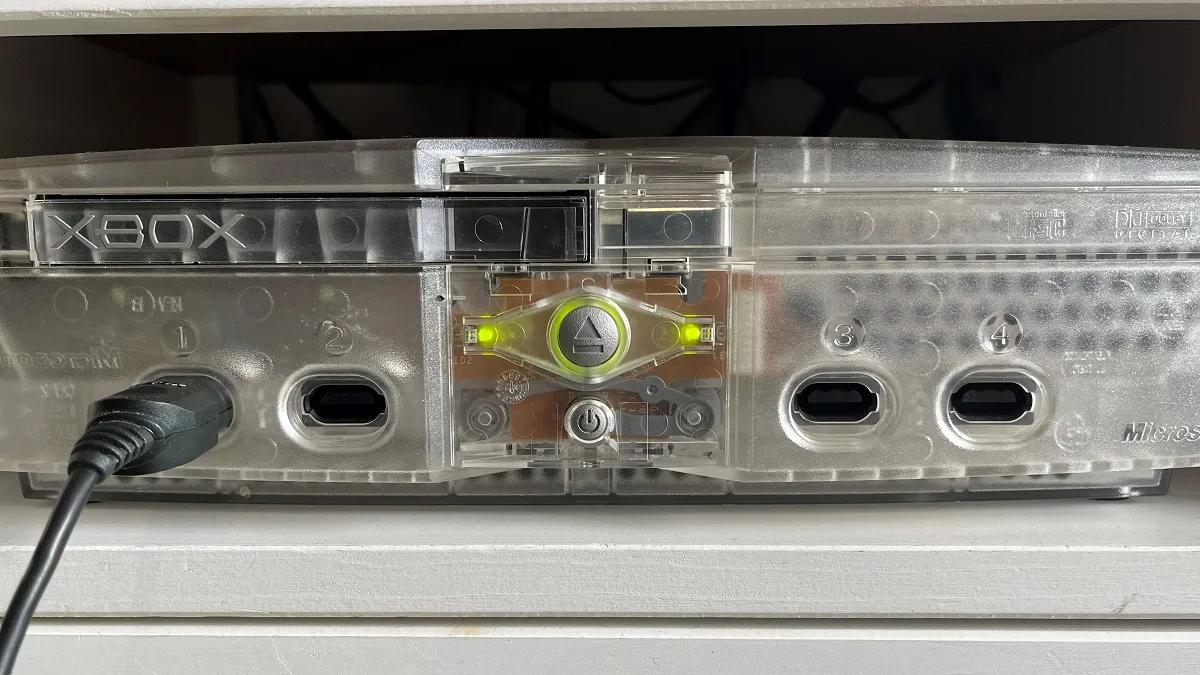
Team Green
The console wars were still raging when I was in high school, and while I was on team GameCube, a good friend of mine was on team Xbox. Maybe not firmly team Xbox, as he wasn’t as close-minded as I was. He loved the short-lived Dreamcast and even managed to introduce me to some PS2 titles that stuck with me. However, his enthusiasm for Microsoft’s first foray into the console market has left me with a lasting affection towards the massive brick of hardware.
With just short of 1000 games, it had a larger library than Nintendo’s GameCube, but a much smaller one than the PS2. It sold an estimated 24 million, which gave it a small lead over the Gamecube’s estimated 22 million. Most importantly, it solidified Microsoft as a big player in the console market that endures to this day.
Today, I mostly know it as the era’s console with the best third-party ports. If a game was released on the three major consoles of the generation, you can bet that the best version was on Xbox. However, while that’s a terrific strength to have, the console’s beefy hardware attracted a large number of exclusive titles. Selecting from such a large pool was no easy task, and for all those that I name below, I’ve left out some other great titles.
[caption id="attachment_372166" align="alignnone" width="640"]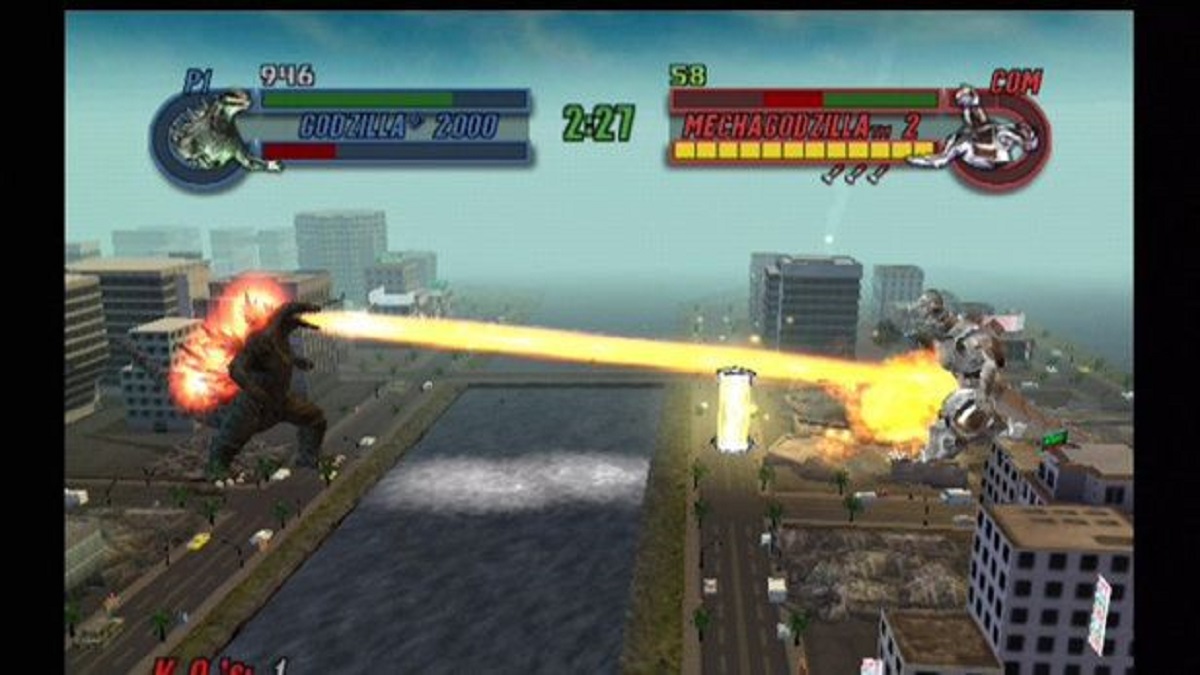 Image via Mobygames[/caption]
Image via Mobygames[/caption]
10. Godzilla: Save the Earth (2004)
Okay, I know a lot of people aren’t going to agree with me here, but I was a huge fan of Godzilla: Destroy All Monsters Melee on GameCube. However, it was really easy to burn through every scrap of content in that game during a short rental period. Godzilla: Save the Earth is the sequel to that, only it brings with it more content, more kaiju, and more fun.
Yes, I’ll admit that it’s a dumb game about giant monsters throwing skyscrapers at each other, but just saying that out loud reminds me of how awesome that is. Godzilla has had it pretty rough when it comes to video games, but Pipeworks Studios did the license proud. It’s clear that their titles were Godzilla fans trying to make their dream game, and I happen to share in that dream.
[caption id="attachment_372158" align="alignnone" width="640"]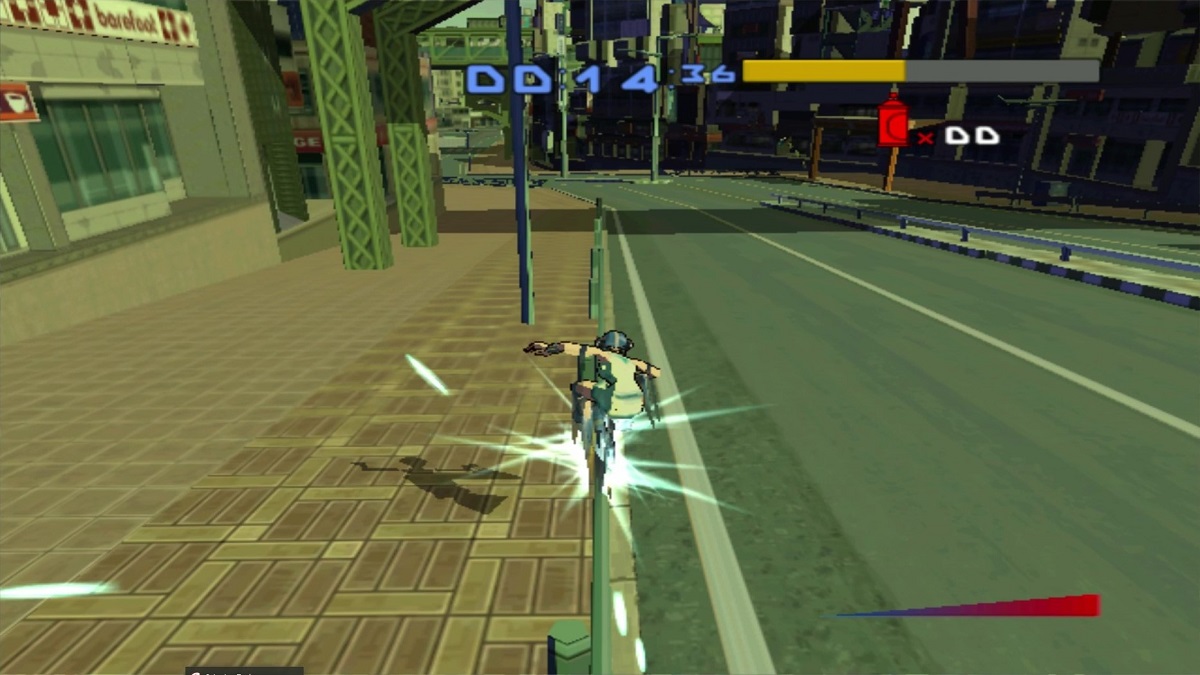 Screenshot by Destructoid[/caption]
Screenshot by Destructoid[/caption]
9. Jet Set Radio Future (2002)
The biggest win for Microsoft’s Xbox was probably the failure of Sega’s Dreamcast. While Sega went multiplatform after pulling out of the console market, they seemed to favor the Xbox, perhaps feeling soured from their rivalries with Nintendo and Sony. If the Dreamcast’s lifespan was cut short, its library lived on through the Xbox. Games like Crazy Taxi, Panzer Dragoon, and Shenmue all found their way to Microsoft’s console.
2002’s Jet Set Radio Future is a good example of this, being a sequel to 2000’s Jet Grind Radio. Well, technically, it’s not a sequel, instead existing in its own timeline. It could be called a do-over, as it carries over a similar plot, the same characters, and the same fast and addicting gameplay. The biggest difference is that Jet Set Radio Future has a more open structure and drops the time limit of the original.
It didn’t sell well, unfortunately, which might be why we haven’t received a sequel to this day. It hasn’t even been ported, meaning the only way to really play it today is on the original console. Playing it now gives a real “they don’t make ‘em like this anymore” vibe.
[caption id="attachment_372159" align="alignnone" width="640"]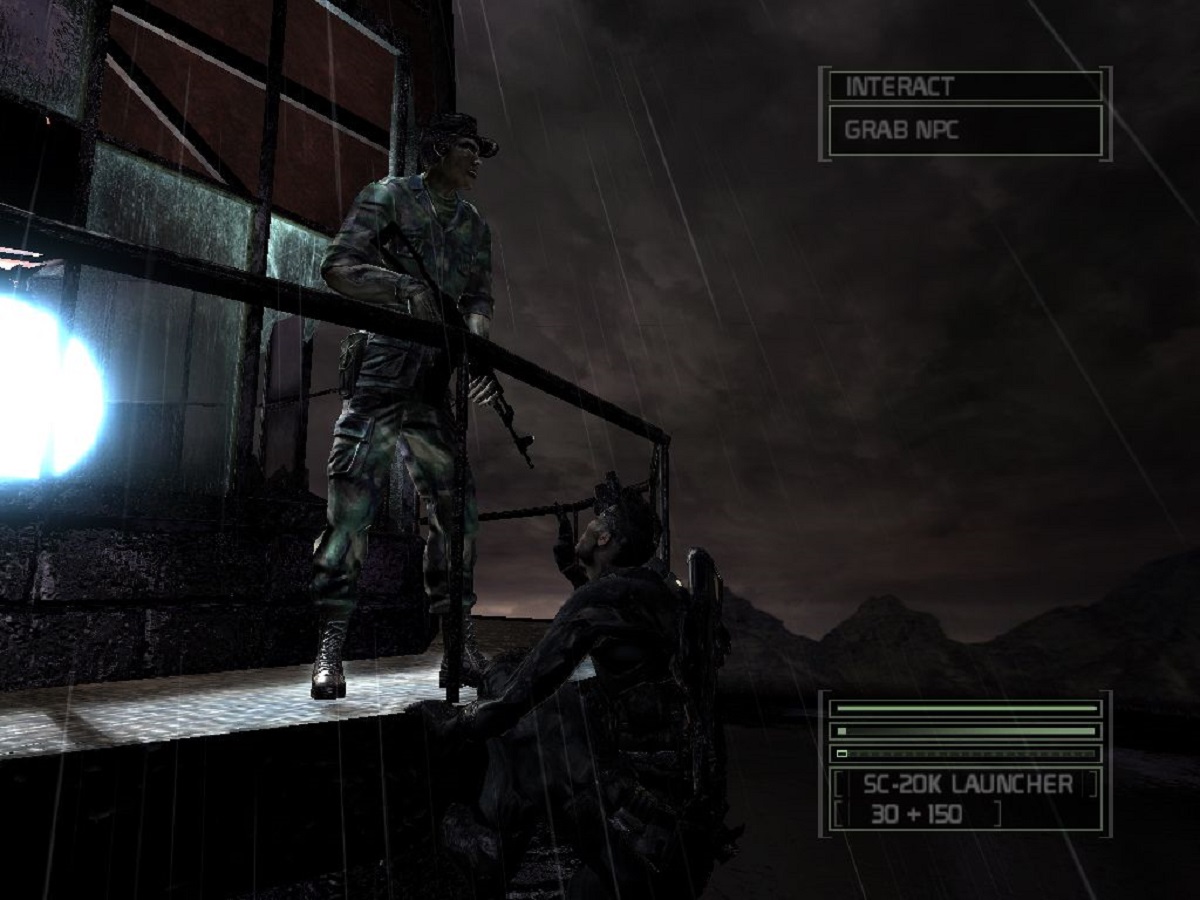 Image via Mobygames[/caption]
Image via Mobygames[/caption]
8. Splinter Cell: Chaos Theory (2005)
Tom Clancy’s Splinter Cell is a series about a grumbly man who sasses his way through terrorists. Or around terrorists, I guess. It’s a stealth game. Although the series was multi-platform, the PS2 and Gamecube always wound up with oddly stripped down versions. Splinter Cell: Chaos Theory is the best the series ever got while potentially being the worst on the less powerful consoles.
While Splinter Cell: Chaos Theory largely stuck to the classic formula in single-player, it threw in a terrific co-op mode and an asymmetrical competitive mode when asymmetrical multi-player was still an extreme rarity. Both of these multi-player splinters were terrific, while the main campaign is the height of the series.
After things transitioned to the next generation, Splinter Cell kind of lost its way. Things became progressively more and more ridiculous, and for some people, that’s probably the way they prefer it. For me, on the other hand, I like my stealth shadowy and my narratives forgettable.
[caption id="attachment_372157" align="alignnone" width="640"]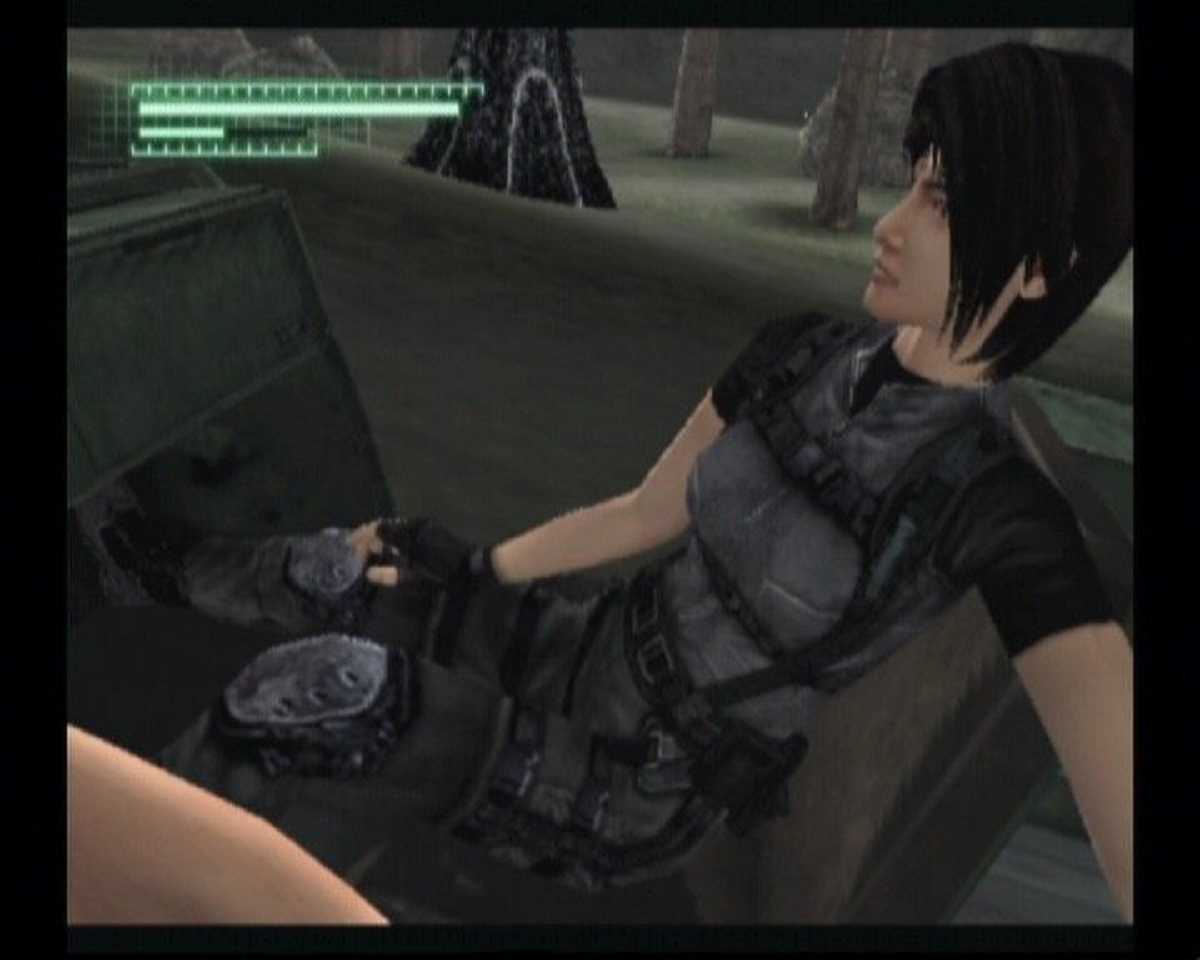 Image via Mobygames[/caption]
Image via Mobygames[/caption]
7. Breakdown (2004)
Breakdown feels like a celebration of the first-person perspective. It’s clear that the developers of Namco wanted to take the immersive and much-beloved camera angle and push it to its limits. You never left the protagonist’s eyeballs. When a friend of mine first told me about it in high school, he excitedly described the protagonist eating a hamburger, and while that sounds ridiculous, it really is awesome.
Japanese first-person shooters are a bit of a rarity, even today. Breakdown feels like the perfect embodiment of what you get when you combine the genre with the inventiveness of Japanese games in the early-’00s. There’s a lot of jank, and the story is very bizarre, but its approach makes it stand out despite those issues. While first-person shooters were becoming progressively more interchangeable, its immersion-first approach keeps it feeling fresh.
[caption id="attachment_372153" align="alignnone" width="640"]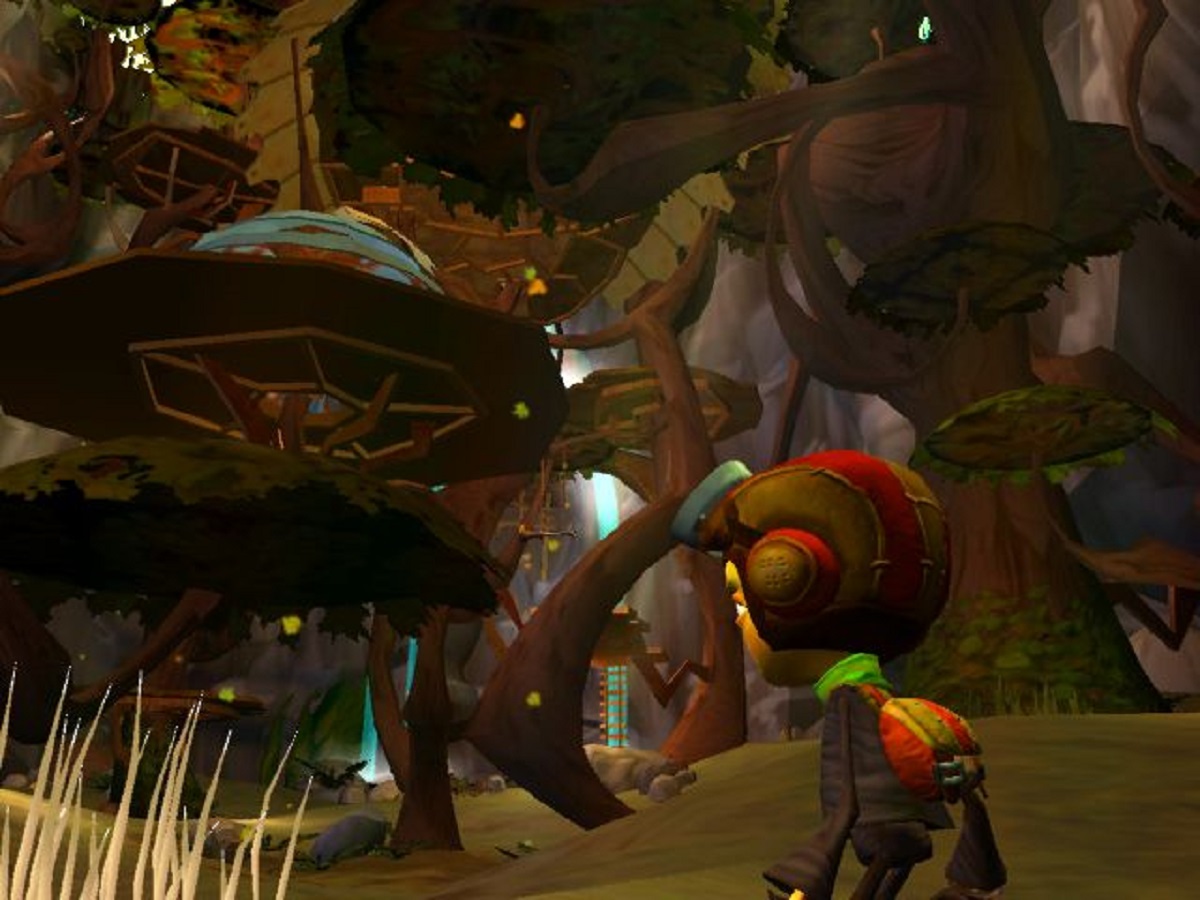 Image via Mobygames[/caption]
Image via Mobygames[/caption]
6. Psychonauts (2005)
Psychonauts has far outlived the console it launched on, to the point where it’s difficult to remember that the Xbox was its primary platform. It did launch on PS2 and PC, but those almost seem like afterthoughts. Regardless, Psychonauts was something of a financial disappointment at a time when new IPs were struggling to be recognized. Despite that, word-of-mouth from its avid fanbase granted it a cult following. Over 15 years later, we’d finally get Psychonauts 2.
The original is still worth playing however. Featuring surprisingly deep characters, an excellent soundtrack, and solid platforming. It’s packed with great and memorable moments that will drill into your grey matter and live there.
[caption id="attachment_372152" align="alignnone" width="640"]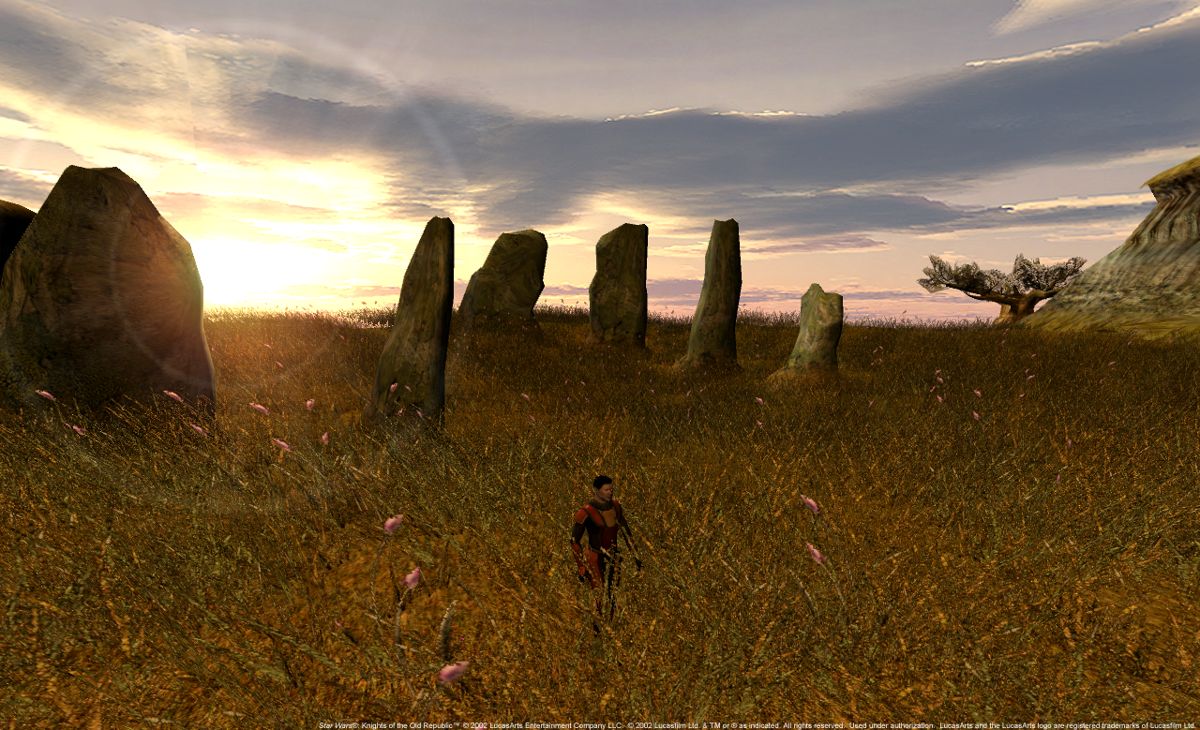 Image via Mobygames[/caption]
Image via Mobygames[/caption]
5. Star Wars: Knights of the Old Republic (2003)
Personally, I played Star Wars: Knights of the Old Republic on PC, but it came out a few months earlier on Xbox. Since I missed out on a lot of CRPGs of the era, KotOR was a pretty enlightening experience for me. The companion system was engrossing, and the dark/light-side alignment was an interesting twist that made the experience very personal. Then, of course, there was HK-47, a robot so twisted and evil that I feel rather jealous.
It was followed up by Star Wars: Knights of the Old Republic 2: The Sith Lords by Obsidian Entertainment, which had higher highs and lower lows. The absolute nadir of these lows was the fact that it was clearly unfinished. So while there’s lots of fun to be had through most of the game, and some of the twists that it pulls are extremely meaningful, the whole thing starts to vibrate harder and harder until the end, to the point where it essentially shakes itself apart. So for those reasons, Star Wars: Knights of the Old Republic is here instead.
[caption id="attachment_372150" align="alignnone" width="640"]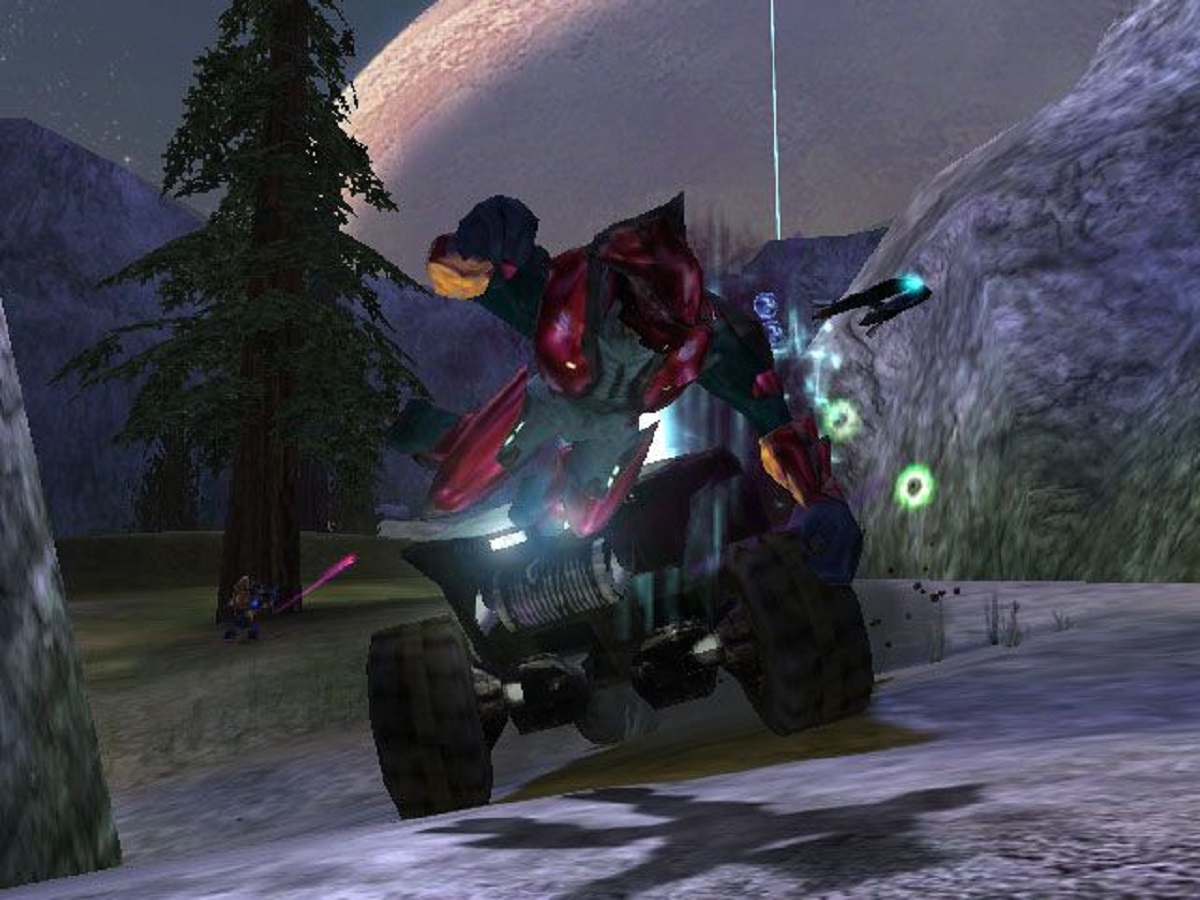 Image via Mobygames[/caption]
Image via Mobygames[/caption]
4. Halo: Combat Evolved (2001)
This is here mostly due to peer pressure. I’m not in love with the Halo games in general. Every year or so I’ll boot one up to play through, and reconfirm my apathy toward the series. However! I recognize its impact. I was around when it dropped, and it was the biggest, latest thing. It was such a huge success that it became one of the most often imitated formulas, and for a good reason. Its combat was truly revolutionary, tying in a small degree of strategy as you identified priority targets and took them out with a range of weapons.
My lack of enthusiasm for Halo today might be because the game's best features and story beats have been replicated to the point of becoming stale today. That's not really the game's fault, though, and back in the day, it was a mainstay multiplayer title for my group of high school friends. We even got eight players together on two connected Xboxes for a few nights. Good times.
[caption id="attachment_372149" align="alignnone" width="640"] Image via Mobygames[/caption]
Image via Mobygames[/caption]
3. Ninja Gaiden Black (2005)
2004’s Ninja Gaiden is a title that I feel was significantly over-hyped at the time of release while simultaneously holding the opinion that it’s a fantastic game. An Xbox exclusive at the time, Tecmo and Microsoft pushed hard with marketing, and a lot of people around me ate it up. It was the Demon’s Souls of the time; it was so difficult that completing it meant you were just so skillful and cool.
I was so built up as this transcendental experience that nothing could realistically live up to the hype. And it didn’t. But I still love it.
It was followed up a year later with Ninja Gaiden Black, which compiled in the two DLC packs that were released for the original title, added missions, and rejiggered other parts of it. It was sort of a definitive edition, and that was only solidified when Ninja Gaiden Sigma was released on the PS3 and was considered to be a prettier version of the game, but otherwise flaccid in comparison. Even today, Ninja Gaiden Black is considered by many to be the best version of the stellar title. I can't disagree.
[caption id="attachment_372146" align="alignnone" width="640"]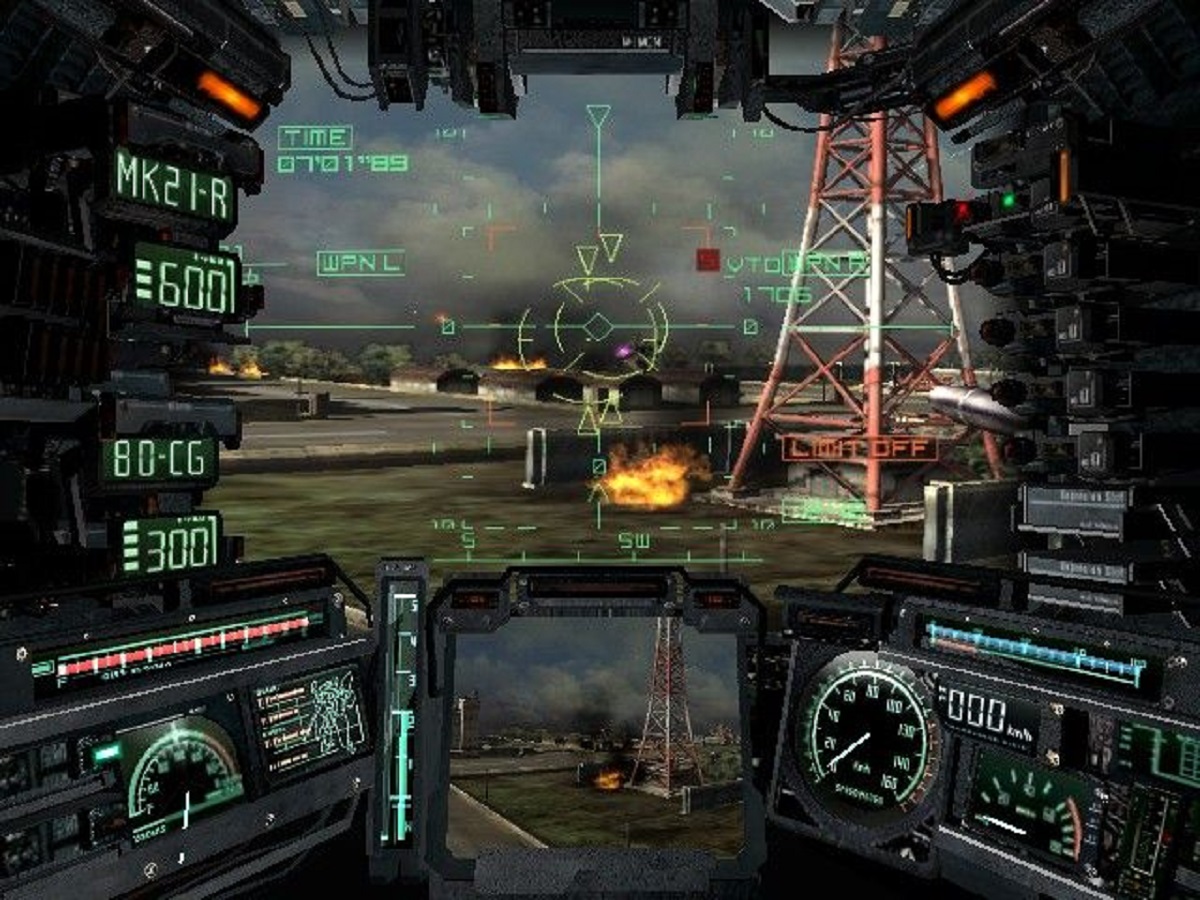 Image via Mobygames[/caption]
Image via Mobygames[/caption]
2. Steel Battalion (2002)
“It’s not the game that matters, it’s the controller,” is something I don’t think anyone has ever said. However, in the case of Steel Battalion, that would probably be accurate. Steel Battalion is designed around a controller with 44 inputs. This includes three pedals, two joysticks, a dial, some toggles, and a whole lot of buttons.
There is a game involved here, but I’m not sure how one is supposed to play it with such an assertively arousing controller. Steel Battalion itself is constructed around hardware outside and in. A lot of effort has gone into making its mechs feel like steel coffins with an almost retro-futuristic, cyberpunk feel. There's enough depth to all the systems to necessitate a good read-through of its extensive manual.
However, and this is one thing you need to know going in: it is absolutely brutal. There’s an eject button on the controller, and it’s more than just for show. If your mech starts giving out on you, you’ll need to press that button to preserve your life. Going down with your tin can means Steel Battalion is going to erase your progress and force you to start over. Even if you do manage to eject, you’ll need to pay for that military hardware you let go up in flames, and if you don’t have the cash to cover it, Steel Battalion will blatantly tell you how much you suck and delete your save. Considering that it can be quite a feat to topple even the fourth level, that eject button will get a workout. At least you'll get your money's worth out of that controller.
[caption id="attachment_372147" align="alignnone" width="640"]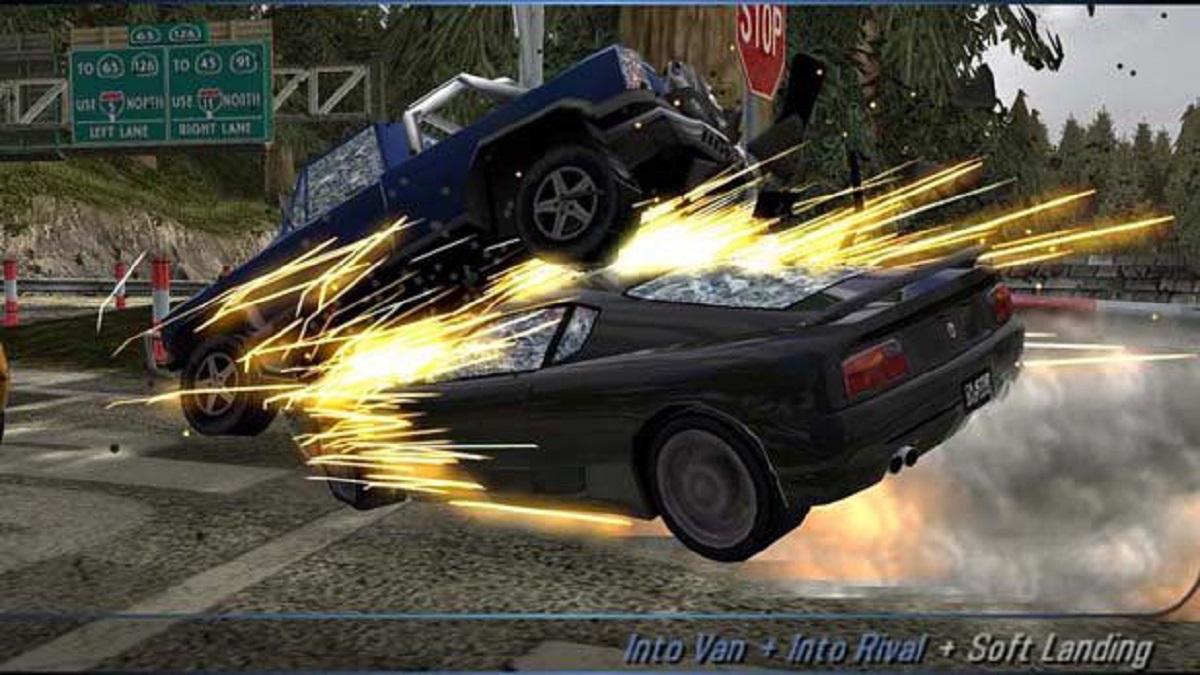 Image via Mobygames[/caption]
Image via Mobygames[/caption]
1. Burnout 3: Takedown (2004)
If there’s on game that made me particularly jealous of Xbox gamers in the day, and one that I’m begging for a port or remaster of today, it’s Burnout 3: Takedown. I was a huge fan of the wreck-'em-up racers Burnout and Burnout 2 on GameCube. Then EA would get their green-stained hands on Criterion, and suddenly the GameCube got kicked to the curb. PS2 got it, but my little lunchbox was ignored. That sucks, because Burnout 3: Takedown is easily the best in the series.
It took everything that was good about the first two games (the crashes) and made them better. Suddenly, bumping and grinding felt more impactful, and the game was more chaotic. You were not only rewarded for skillful driving, but aggressive combat. Somehow, Criterion was able to harness the chaos and create mechanical systems that enhance it. A world tour framework brought all the various modes together in one career. It is, to this day, one of my favorite racing games.
Burnout 3 would be followed up with Burnout Revenge on the platform. However, I feel like the “traffic checking” mechanic (allowing you to knock cars traveling in the same direction out of the way) cheapened the thrills of dodging through traffic. Burnout 3, on the other hand, is racing perfection.
The post 10 best original Xbox games of all time, ranked appeared first on Destructoid.
The Warehouse Raid In Hard Boiled Is The Best Action Scene Ever
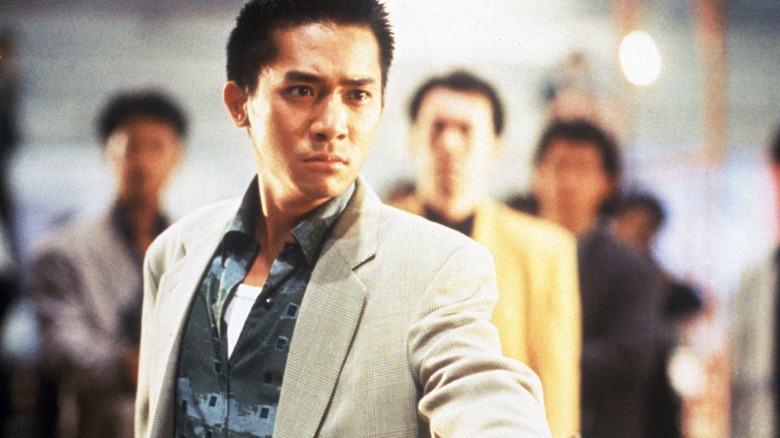
(Welcome to Best Action Scene Ever, a column dedicated to breaking down the best, most effective action sequences throughout the genre. In this edition, John Woo blows minds — literally — with the 1992 classic "Hard Boiled.")
Long before a character named John Wick burst onto the scene, changing the entire landscape of action for years to come, a different John W. did very much the same, with even greater challenges to conquer. Hong Kong filmmaker John Woo might be most well-known in the West for his contributions to Hollywood, including the likes of "The Killer," "Face/Off," and "Mission Impossible: II." But true students of the genre know that his work in Hong Kong cinema influenced much of American action filmmaking for decades to come.
1992's "Hard Boiled" marked a huge turning point in Woo's career, representing the last Hong Kong film he made (the movie is mostly spoken in Cantonese) before going on to pursue work in Hollywood. The premise is as simple as it gets: a hard-boiled detective on the hunt for illegal weapon trafficking becomes embroiled in an all-out gang war, which (unbeknownst to him) is being infiltrated by an undercover cop inserted deep within the ranks of the Triad crime syndicate. "Hard Boiled" united action star Chow Yun-Fat (who also worked with Woo on "A Better Tomorrow" years prior) with Tony Leung, putting them on opposite sides of the same war and wowing audiences with a nonstop onslaught of stunts, as the two enemies crept closer to becoming a legendary buddy cop pairing.
That moment happens to come during one of the most extravagant set pieces in the entire film: a warehouse raid that rapidly turns into a frenzied and jaw-dropping shootout.
The Scene
You know the drill. Chow Yun-Fat's Inspector "Tequila" Yuen — a hot-headed cop that plays by his own rules — jumps headfirst into dangerous situations and blows away gangbangers despite hordes of innocents caught in the crossfire. While Tequila is busy aggravating his superior (Philip Chan), Tony Leung's Alan is forced to do the dirty work of a trusted hitman, killing whichever targets threaten their enterprise in order to ensure the trust of mob boss "Uncle" Hoi (Kwan Hoi-san) and the ambitious, ladder-climbing Johnny Wong (Anthony Wong) — a Triad mainstay with a vicious mean streak. The two eventually land on each other's radars in a big way, culminating in a violent and surprisingly complex warehouse raid roughly a quarter of the way through the movie.
Utterly unsuspecting of Alan's allegiances, Uncle Hoi and his men walk into a trap when Johnny Wong secretly recruits Alan in a brazen power play. What follows is an explosive-laden and stunt-heavy sequence that made audiences sit up and wonder how exactly the creative team ever managed to pull it off. Led by gunmen on motorcycles, the warehouse target is transformed almost instantaneously from a wide-open space hosting Uncle Hoi's weapons cache to a claustrophobic death trap. Through it all, Woo keeps the action interesting and unexpected. Stuntmen fall off the roofs of cars, get lit on fire, and are even run over by motorcycles, all while Woo's signature camerawork captures the bloody, physics-defying carnage of relentless shootouts.
Surprisingly, Leung himself doesn't get much to do besides stand around and look cool while smoking a cigarette ... but that soon changes when he's compelled to murder his old boss in cold blood, kicking off the even more extravagant second half of this iconic shootout.
Why It Works
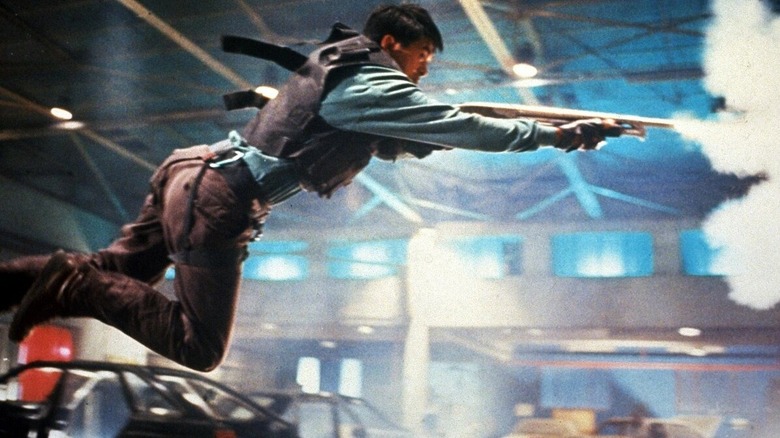
I can sum up exactly why this sequence works so well in a single, unsatisfying sentence: John Woo and his stunt team simply go for it. Watching the extended warehouse raid unfold breezily calls to mind several of its more modern successors that clearly took a page from the Woo playbook, like "The Matrix" or the "John Wick" movies. If storytelling is about building on the foundation laid down by countless others, then action is an ever-evolving dance channeling original concepts and a remix of classics to that point, like Sam Peckinpah. What we're left with is a wholly unique flavor of action that Woo has always excelled in, sending stuntmen and vehicles alike flying amid explosions and gunfire that triggers some of our most deep-seated instincts to watch things blow up. It's honestly as simple as that.
But what really sends this sequence to the next level is the fact that it plays out like its own mini-movie amid the much more sweeping focus of "Hard Boiled." Finally, the raid appears to be winding down, with an obviously conflicted Alan cornering Uncle Hoi and his men. Throughout an almost excruciating build-up to having to make this fateful choice, Leung perfectly captures the emotional turmoil rippling inside Alan. Goaded on by Johnny Wong and with Tequila silently observing off to the side, Alan's trap is sprung and he can no longer put off the inevitable, executing Hoi and wiping out his henchmen in a shocking burst of self-loathing gunfire.
The tense standoff, which takes up a whopping seven minutes of this nearly 18-minute-long sequence, gives us just the right amount of time to catch our breath before slamming us in the face once again with even more mayhem to come.
The Key Moment
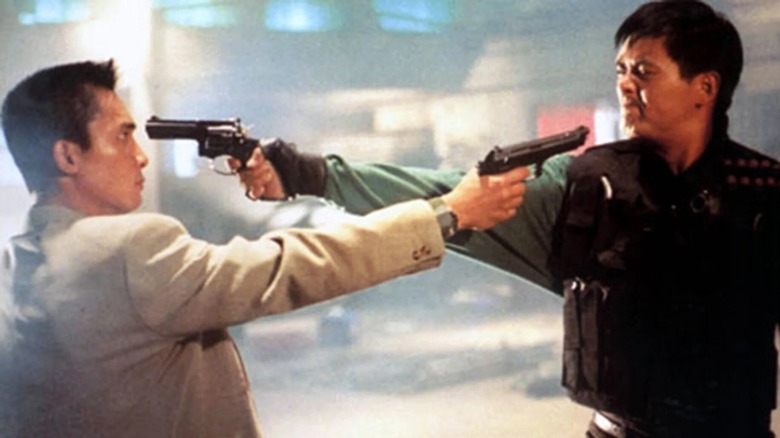
If you thought this sequence was chaotic enough as it was, try throwing the one-man wrecking crew known as Tequila into the mix. Having had enough of crouching in the shadows, Chow Yun-Fat finally enters the fray and completely turns this sequence on its head. Chucking flash-bangs into the mix and rappelling down from the warehouse roof, the appearance of Tequila somehow ups the ante even more and adds all the sparks, bullets, and flames that we never knew we needed. Let's put it this way: For anyone who may have become jaded by stale and formless action in most modern blockbusters, watching Tequila shotgun a motorcyclist out of mid-air and subsequently burst into flames in a gloriously slow-mo shot might just be the antidote you need.
Depicted as the stereotypical cop and robber to this point, the two finally end up face-to-face and the results are nothing short of incredible. Narrowly avoiding each others' hail of bullets, the action is steadily funneled into grittier, close-quarter combat as the stakes rise ever higher. The intrusion of the persistent assassin Mad Dog (Philip Kwok) adds an extra layer of complications, but the action finally builds to the confrontation between our two main characters.
Here, we get a much-welcome dose of emotion anchoring this story, which could've easily gone off the rails in its pursuit of the loudest, most visceral bang for its buck. Tequila runs out of bullets just as he's about to deliver the killing blow, but Alan almost smirks as he refuses to fire at point-blank range and simply walks off. In this one moment, their entire dynamic changes and vaults "Hard Boiled" into a much more fulfilling yarn about enemies coming together to join forces and combine their firepower for even greater thrills.
Read this next: The 18 Best Action Movie Actors Ranked
The post The Warehouse Raid In Hard Boiled Is The Best Action Scene Ever appeared first on /Film.
Less Than Half of US Workers Use All Their Vacation Days
Read more of this story at Slashdot.
